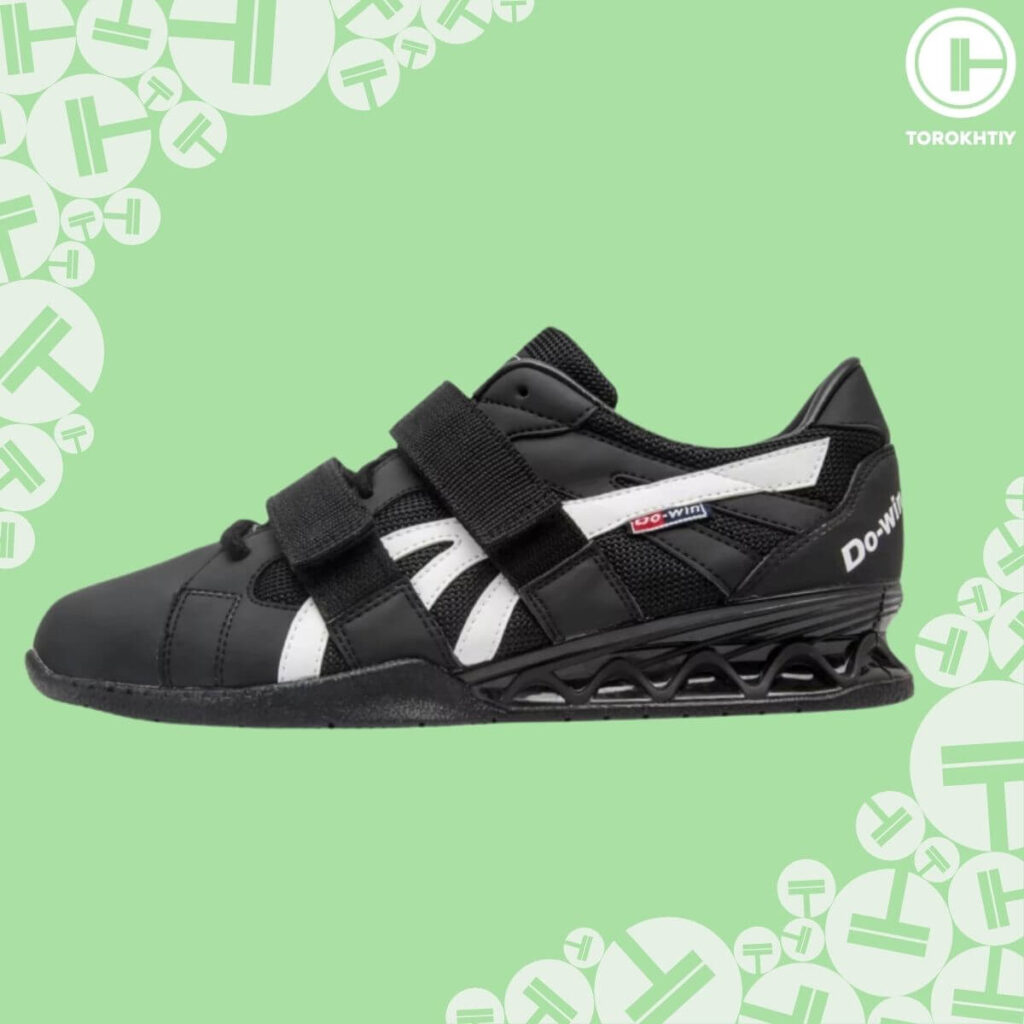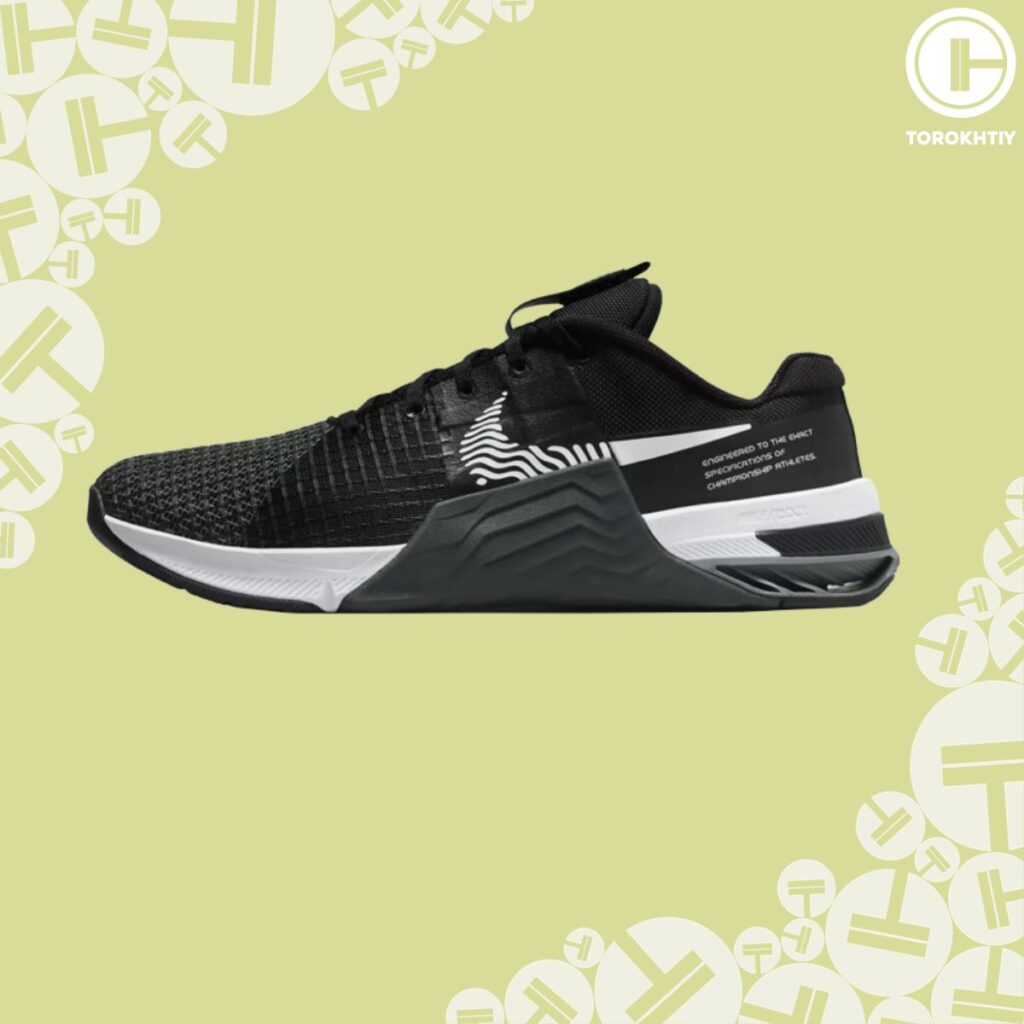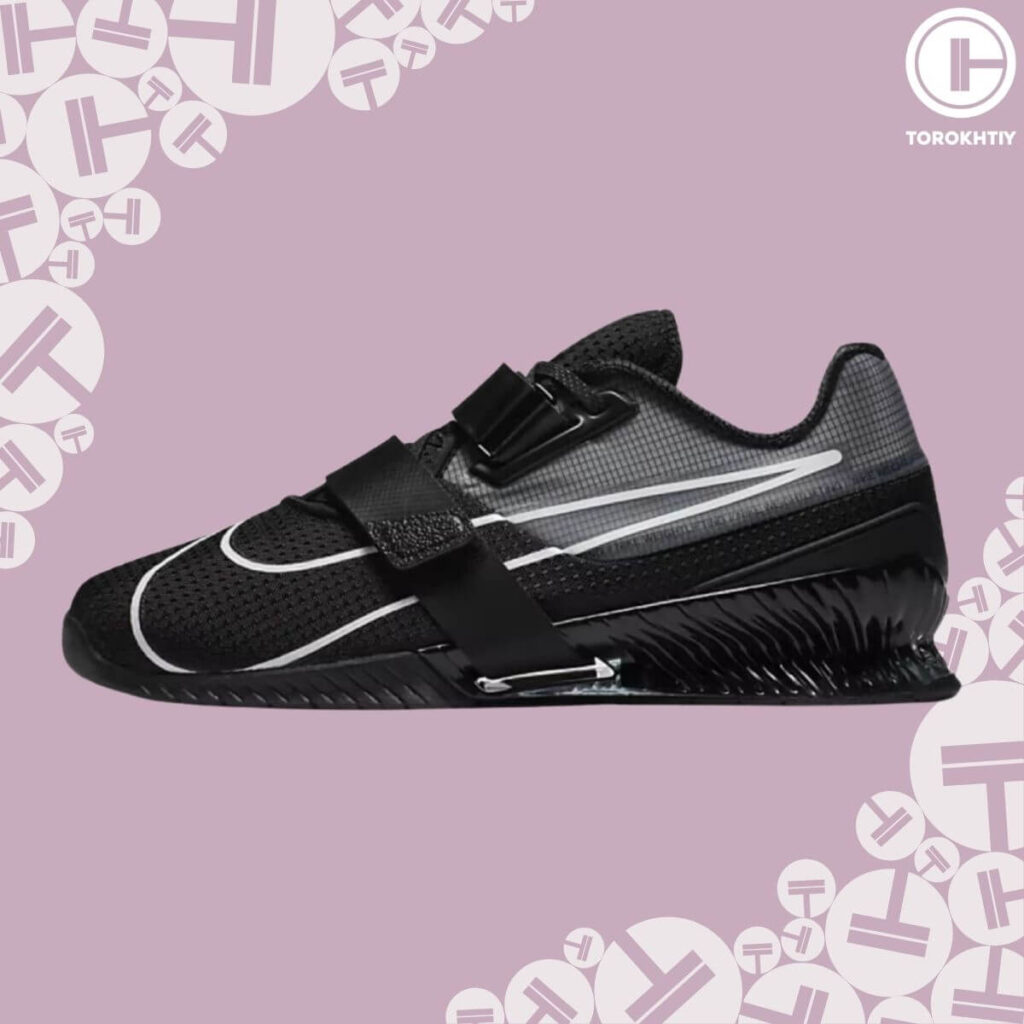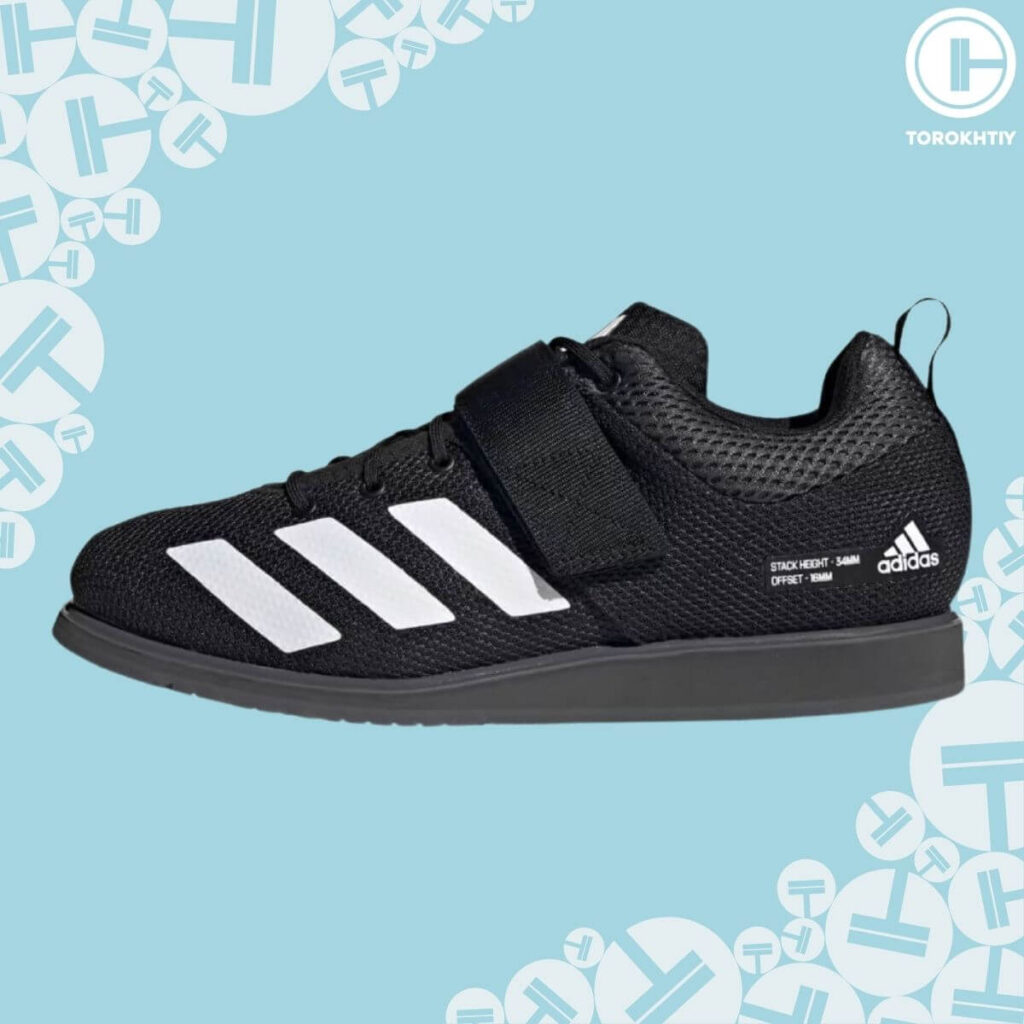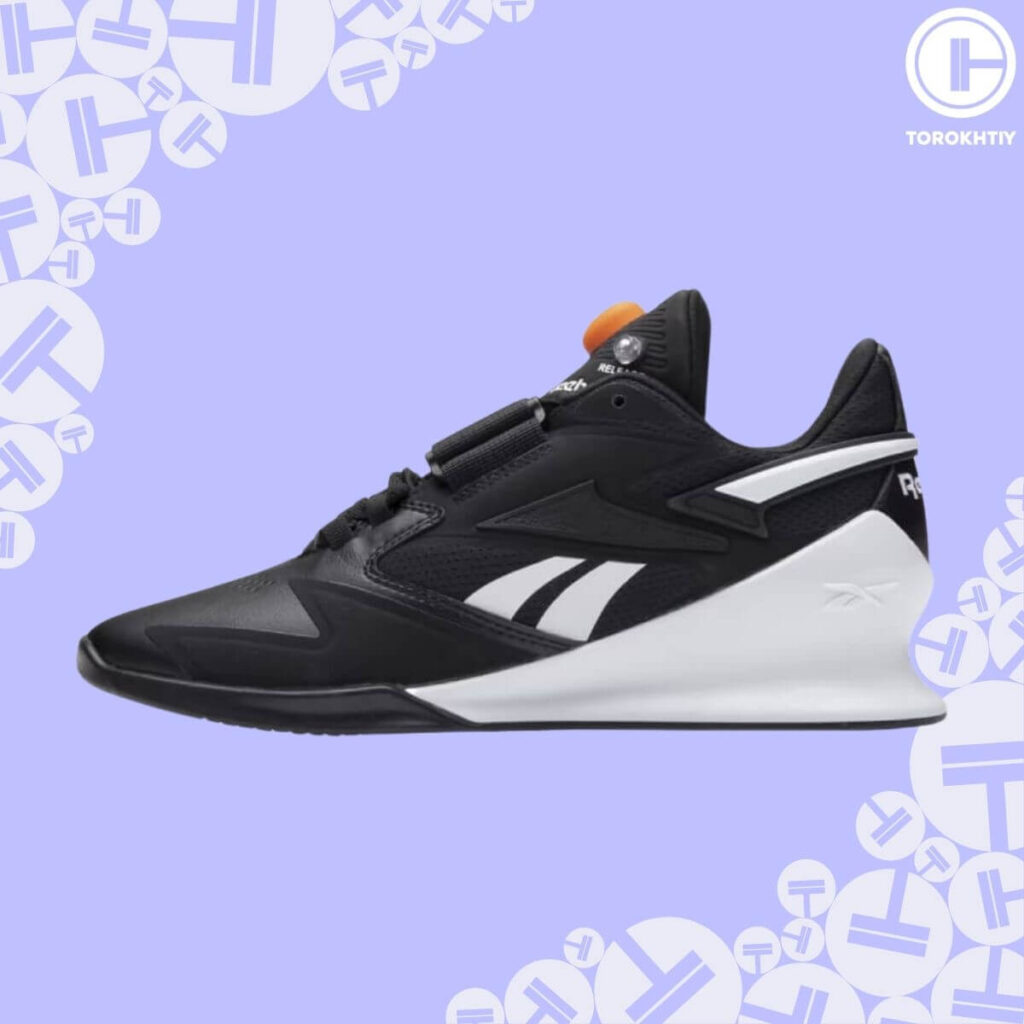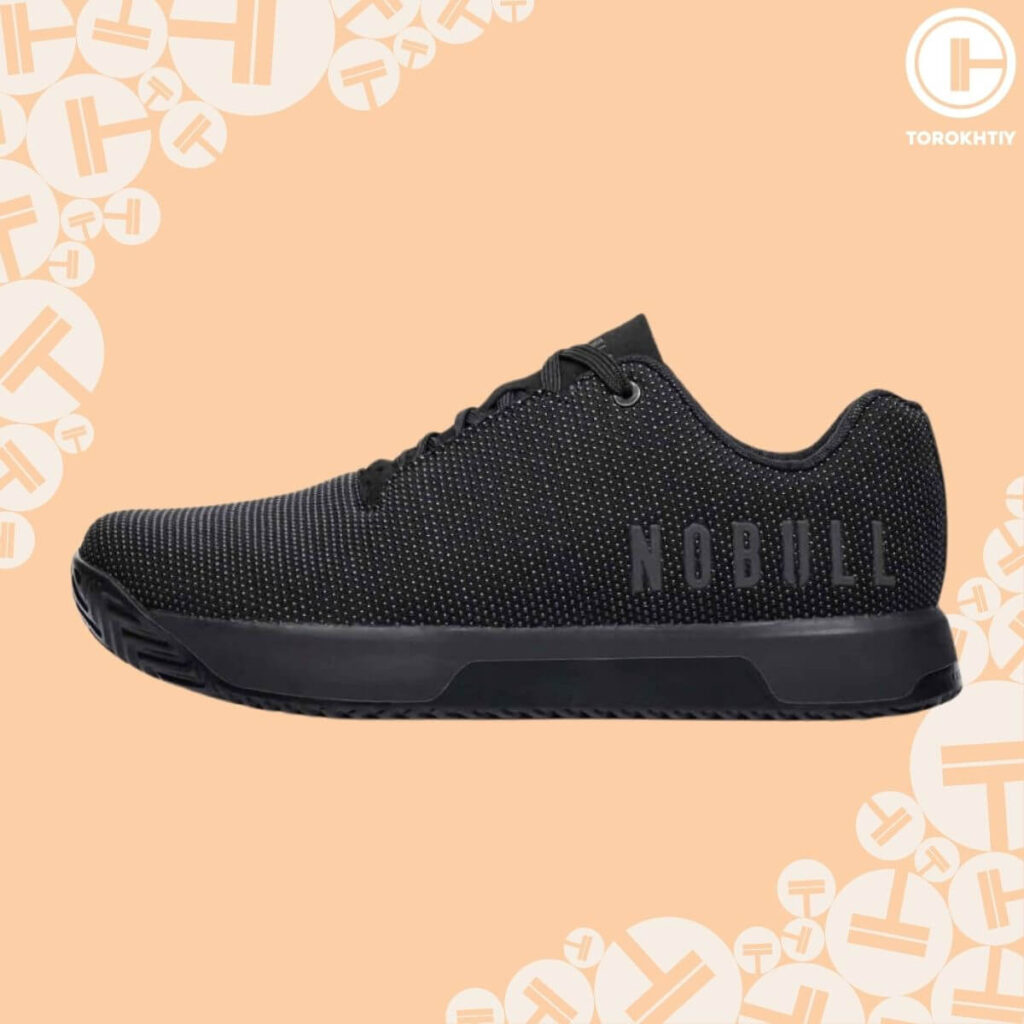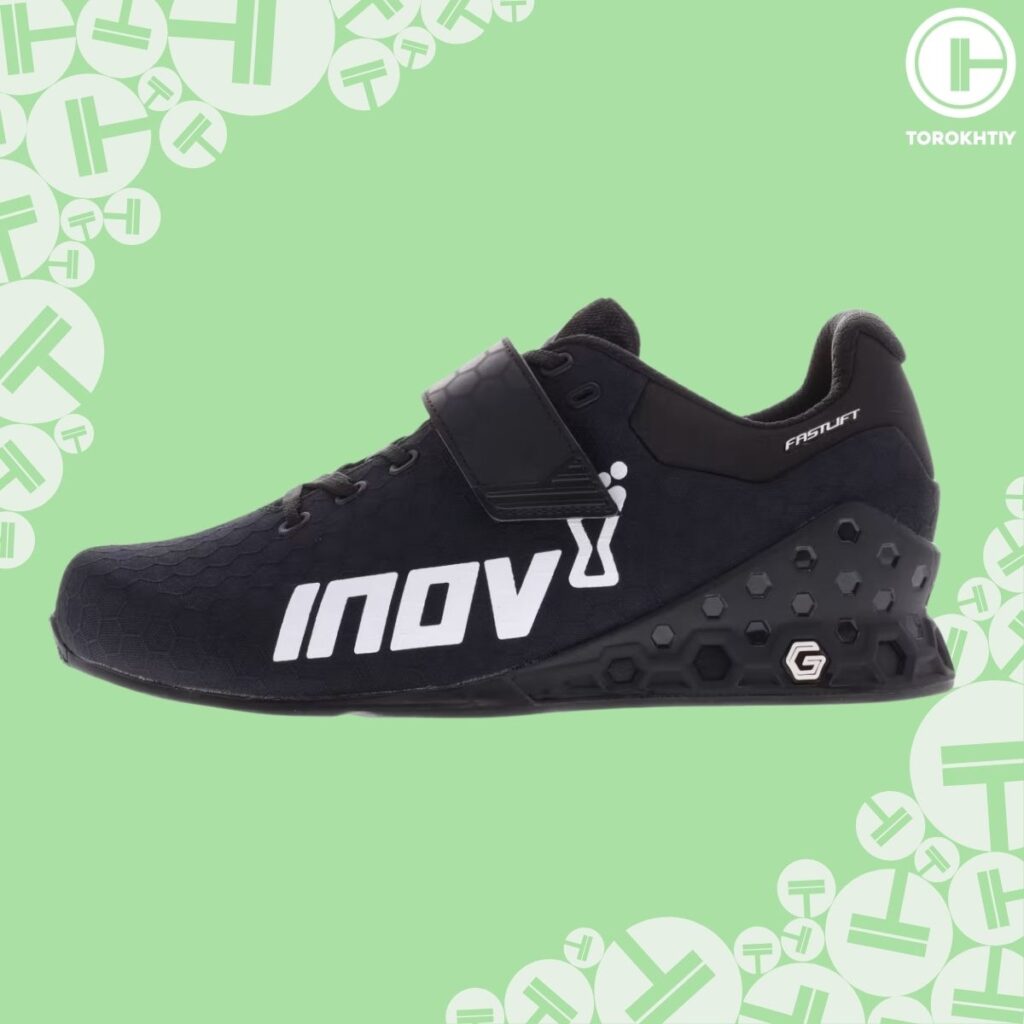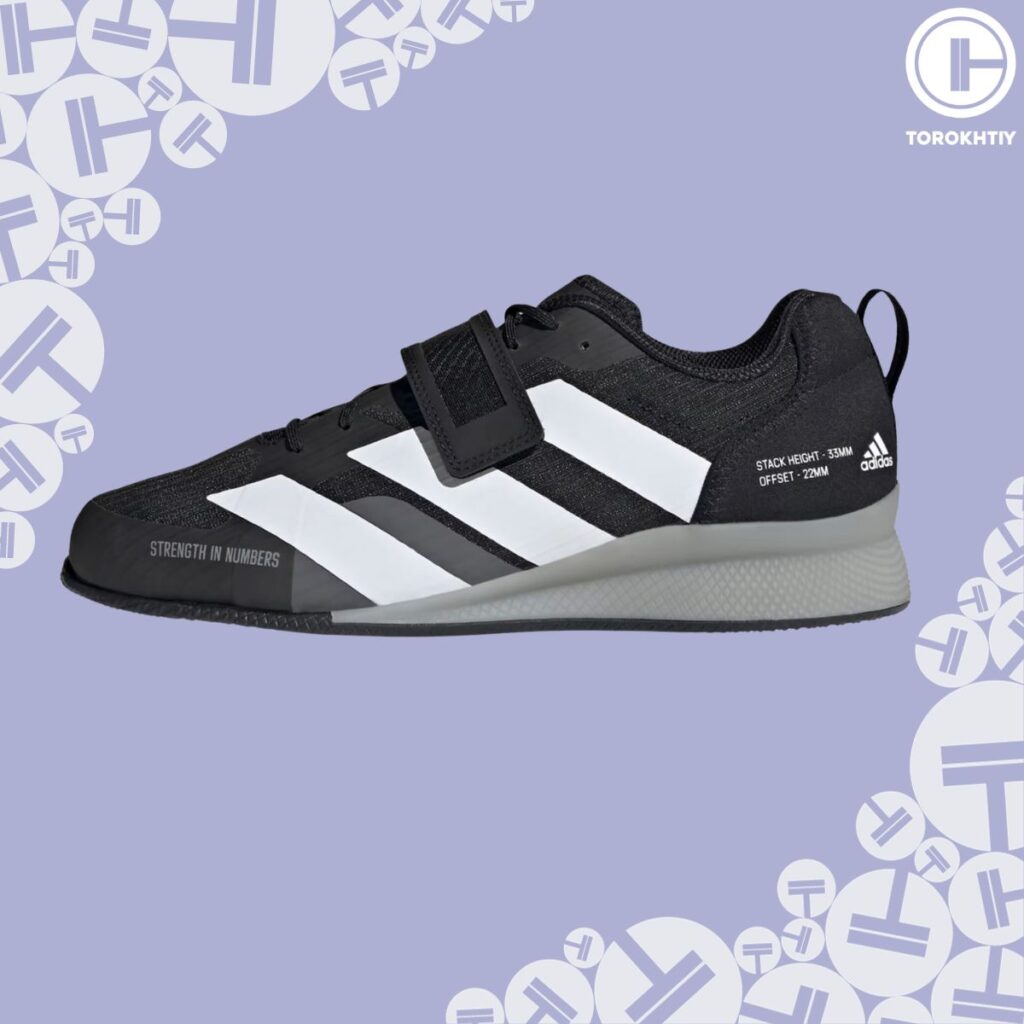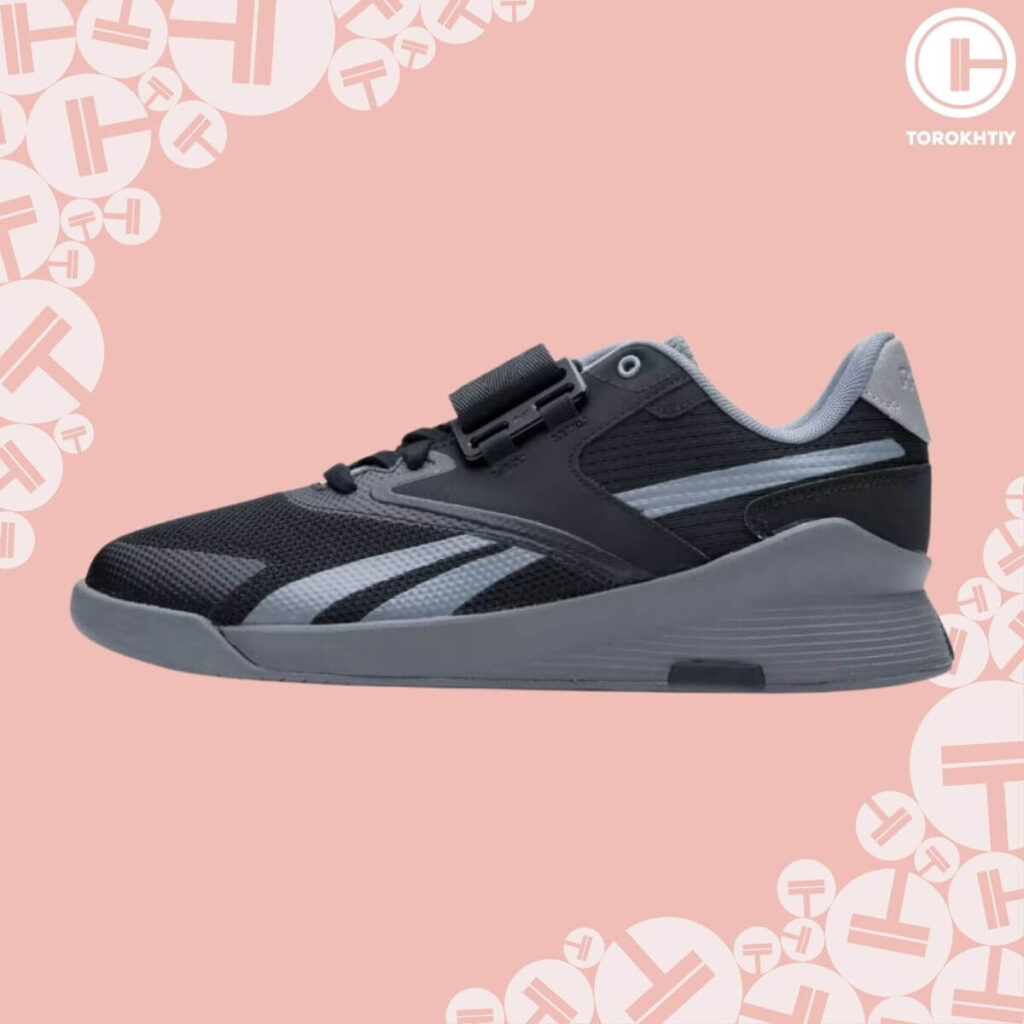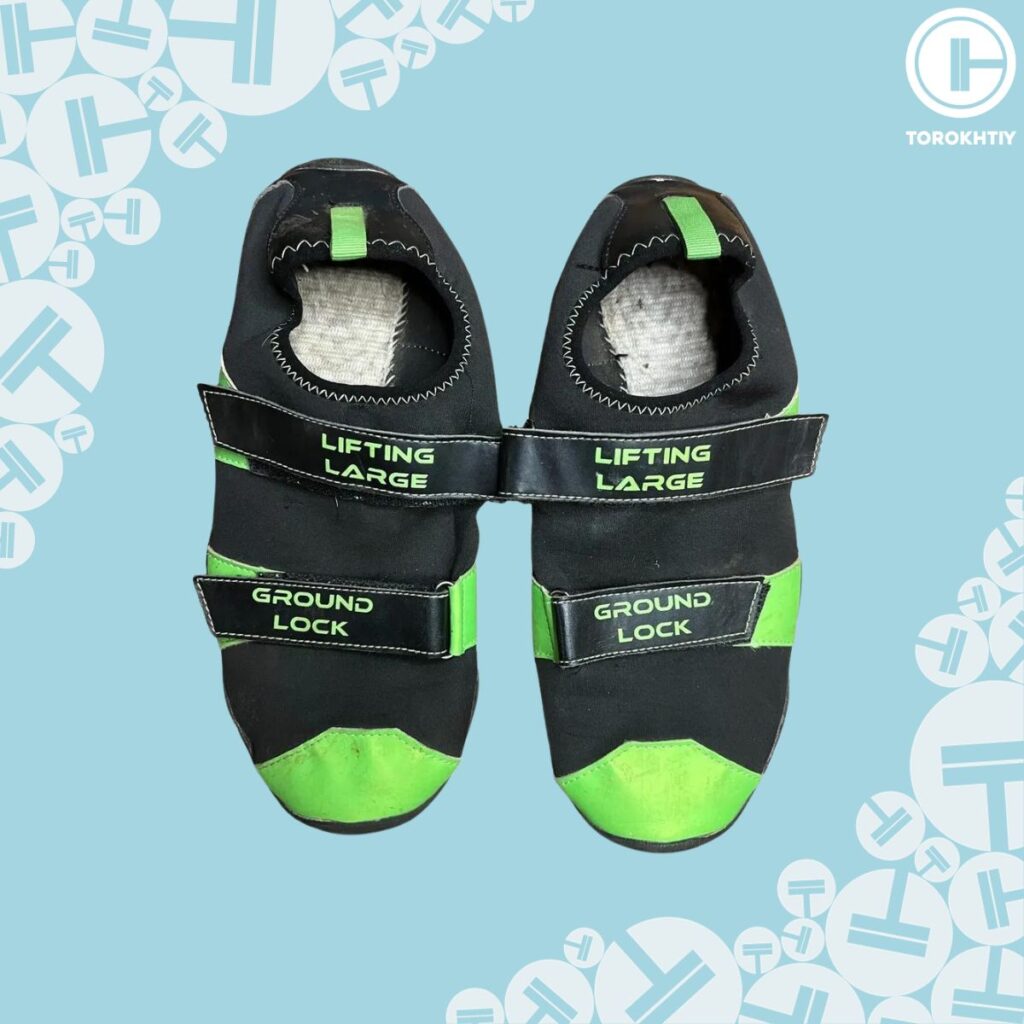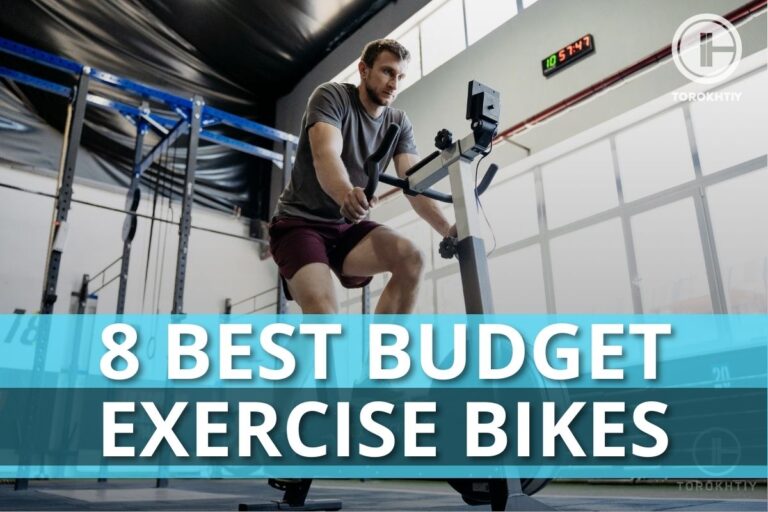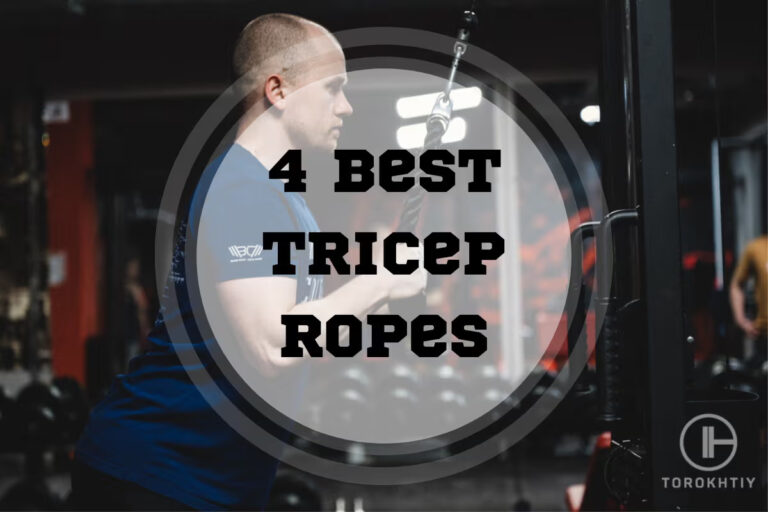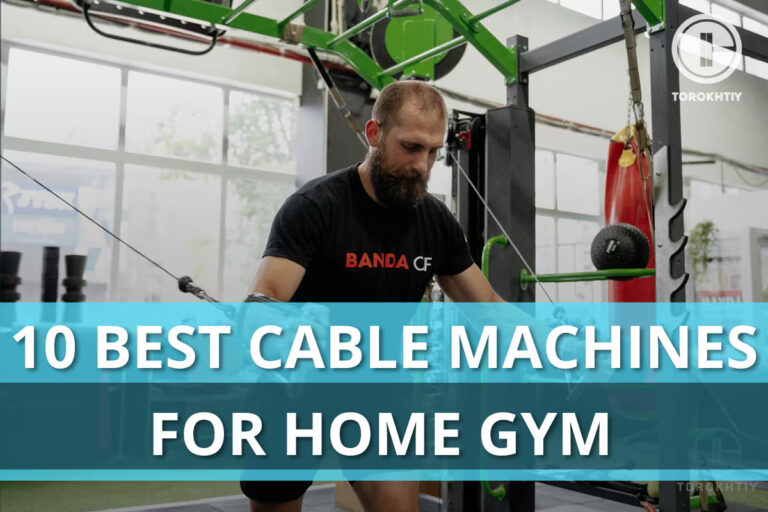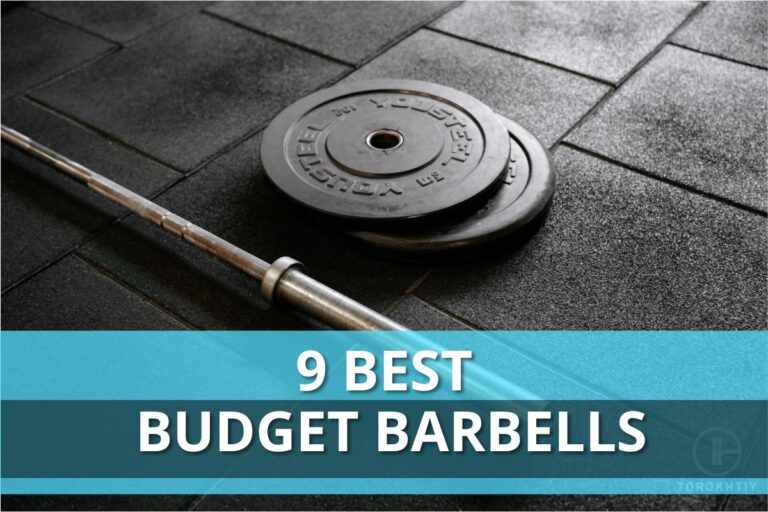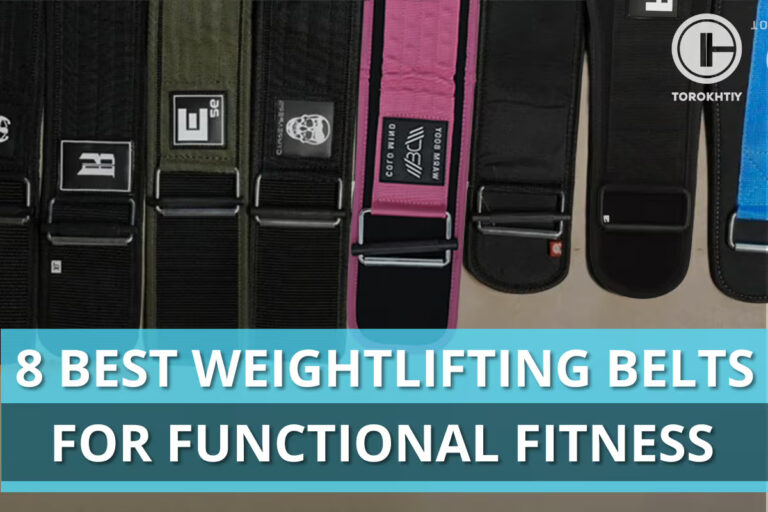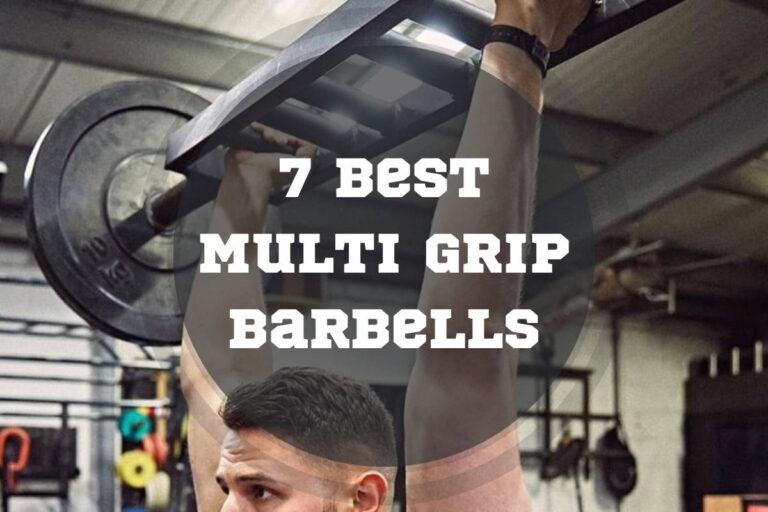10 Best Weightlifting Shoes in 2025 (Reviewed by Pros)
Reviewed by: Sergii Putsov (Head of Sport Science, 20 years of Oly Lifting experience, PhD Sport Science)
Weightlifting shoes can be a big difference-maker when lifting heavy weights.
They’re designed to enhance your performance in exercises like squats, deadlifts, and Olympic lifts, while also reducing the risk of injury to your feet, ankles, and knees.
In a hurry?
In a hurry and can’t keep reading? How about you check out the DO-WIN.
The creation of these shoes was inspired (and curated) by the late Glenn Pendlay, the Olympic weightlifting coach. If you’re already a fan of the Pendlay or the Do-Win shoe line, you will love them.
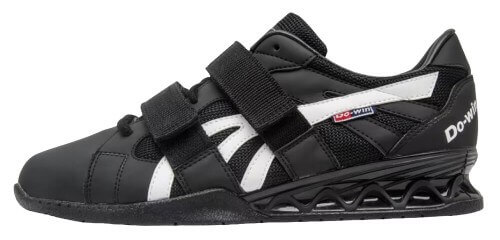
Our team, comprised of certified personal trainers and professional athletes, has tested 30 weightlifting shoes for this article. We’ve spent 450 hours in total rigorously testing most of these products, and only 10 of the best ones made the cut.
We have also analyzed hundreds of online user reviews. We update our list all the time, so share your experiences in the comments section!
Let’s help you find the best weightlifting shoes for you by comparing our top choices to buy.
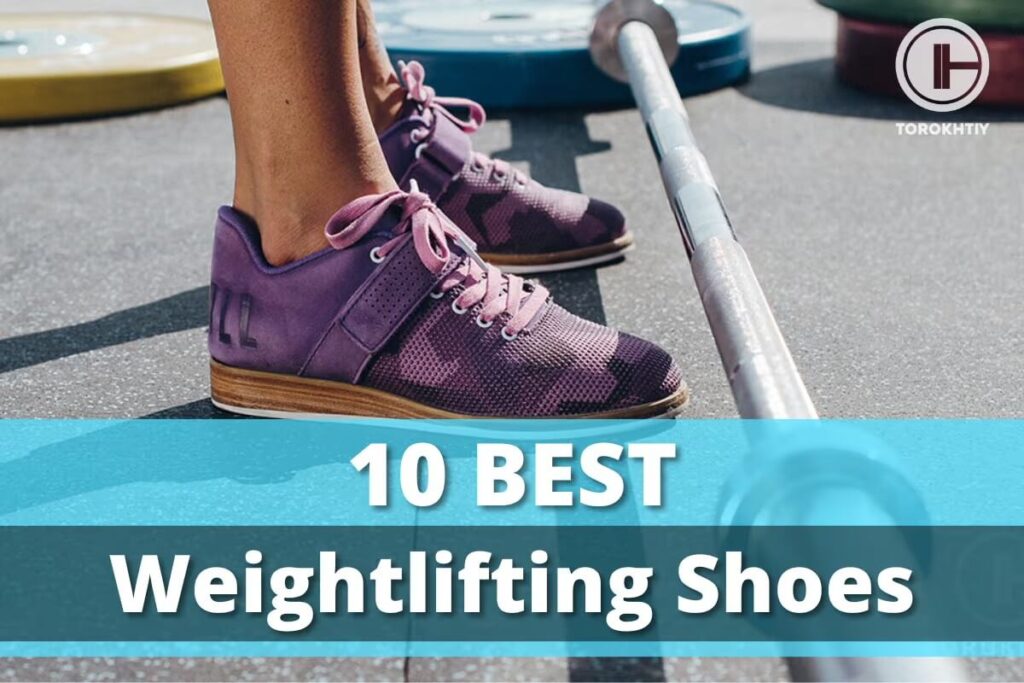
Top 10 Weightlifting Shoes Reviewed
- DO-WIN – Top Pick
- NIKE METCON 8 – Best for Cross Training
- Nike Romaleos 4 – Best for Olympic Lifting
- Adidas Powerlift 5 – Best Value for Money
- Reebok Legacy Lifter III – Best for Squat
- Nobull Trainer+ – Best for Fitness
- Inov-8 Fastlift Power G 380 – Best for Wide Feet
- Adidas Adipower III – Best for Narrow Feet
- Reebok Lifter PR II – Best for Flat Feet
- Liftinglarge Slipperss – Best Deadlift Slipper
| Product | Total | Stability | Materials | Durability | Breathability | Grip |
|---|---|---|---|---|---|---|
| Do-Win | 49 | 10 | 10 | 10 | 9 | 10 |
| Nike Metcon 8 | 48.5 | 10 | 9.5 | 9.5 | 9.5 | 10 |
| Nike Romaleos 4 | 48.5 | 10 | 10 | 9.5 | 9 | 10 |
| Adidas Powerlift 5 | 48 | 10 | 9 | 10 | 9 | 10 |
| Reebok Legacy Lifter III | 47 | 9.5 | 9 | 9 | 10 | 9.5 |
| Nobull Trainer+ | 45 | 9 | 9 | 9 | 9 | 9 |
| Inov-8 G 380 | 45 | 10 | 9 | 9 | 8 | 9 |
| Adidas Adipower III | 45 | 9 | 9 | 9 | 9 | 9 |
| Reebok Lifter PR II | 43.5 | 9 | 8.5 | 8.5 | 9 | 8.5 |
| LiftingLarge | 42.5 | 9 | 8 | 8.5 | 8.5 | 8.5 |
1. Do-Win Weightlifting Shoes
The creation of these shoes was inspired (and curated) by the late Glenn Pendlay, the Olympic weightlifting coach. If you’re already a fan of the Pendlay or the Do-Win shoe line, I’m sure you’re excited to read this review. And if not, then get ready to learn more about the best weightlifting shoes you can currently find.
You’ve probably either seen these before, or you saw a pair of shoes like them, because the Do-Win design stayed relatively the same over the years. That’s both a good thing and a bad thing. If you’re into design and like to switch it up with your shoes, you may be bored of looking at these.
But the good thing about the design staying the same is that the focus went into coming up with updates and new features (e.g., better durability, improved insoles for enhanced comfort, breathable mesh panels for better ventilation, etc.).
There are a lot of people that these Olympic lifting shoes would be good for: beginners or professionals. You really can’t beat its versatility because these are good for pretty much everyone.
These shoes have a wide profile, which means they’re great for broad feet. While many footwear brands and options claim to be suitable for wider feet, they sometimes fall short of expectations.
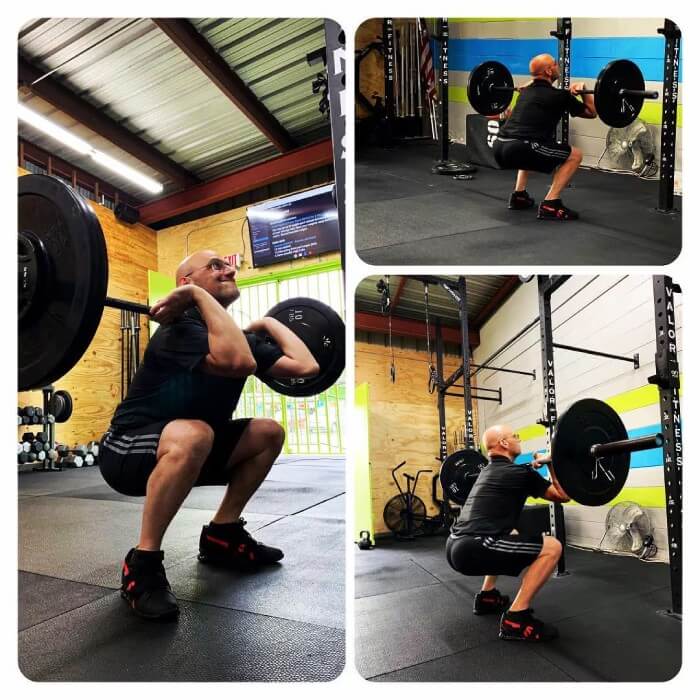
The Do-win weightlifting shoes truly deliver a spacious toe box and ensure a comfy, secure fit. If you’ve struggled to find a good accommodating fit, then these might be a noteworthy solution.
These shoes have a wide profile, which means they’re great for broad feet. While many footwear brands and options claim to be suitable for wider feet, they sometimes fall short of expectations.
The Do-win weightlifting shoes truly deliver a spacious toe box and ensure a comfy, secure fit. If you’ve struggled to find a good accommodating fit, then these might be a noteworthy solution.
The heel height is 0.75”, which is considered to be the best for weightlifting. The shoes themselves are super flexible and durable due to the single-sole construction.
They’re not the most breathable, though. The upper is made of synthetic leather and nylon, and, although you’d think mesh in the upper would make the shoes breathable, that’s not the case here. Your foot won’t be completely cooked because there is some air circulation, but definitely not enough.
The Do-Win Weightlifting Shoes, known for their timeless design, offer an ideal blend of versatility, enhanced features, and a spacious toe box, making them suitable for both beginners and professionals with broad feet.
Positives:
Could be better:
2. NIKE METCON 8
The Nike Metcon series is a line of cross-training shoes designed for athletes who engage in various fitness activities - from weightlifting to cross-training.
Released in August of 2022, the Metcon series 8 is a worthy successor to the popular series 7. And although Metcon 9 is already out on the market, the Metcon 8 remains our choice when it comes to cross-training.
Version 8 offers a better balance between flexibility and support, thus boosting its versatility. The V8 also provides you with the durability/stability that the Metcon series is renowned for, but without the additional cost that version 9 brings.
The sneakers are durable, stable, and versatile, making them a great choice for people who participate in functional fitness, HIIT and similarly mixed workouts.
The upper of the Nike Metcon 8 is made from a lightweight textile mesh that’s both flexible and breathable, with additional textured overlays on the outer foot side, reinforcing it in common places of wear and tear.
The front of the sole features grooves that let the forefoot bend naturally as you step. Furthermore, the midsole is made from the patented Nike React foam cushioning, which has excellent elasticity and shock absorption.
This makes the Metcon 8 capable of withstanding pressure from heavy weights without losing shape, but also comfortably taking repeated hits from exercises such as running or jumping.
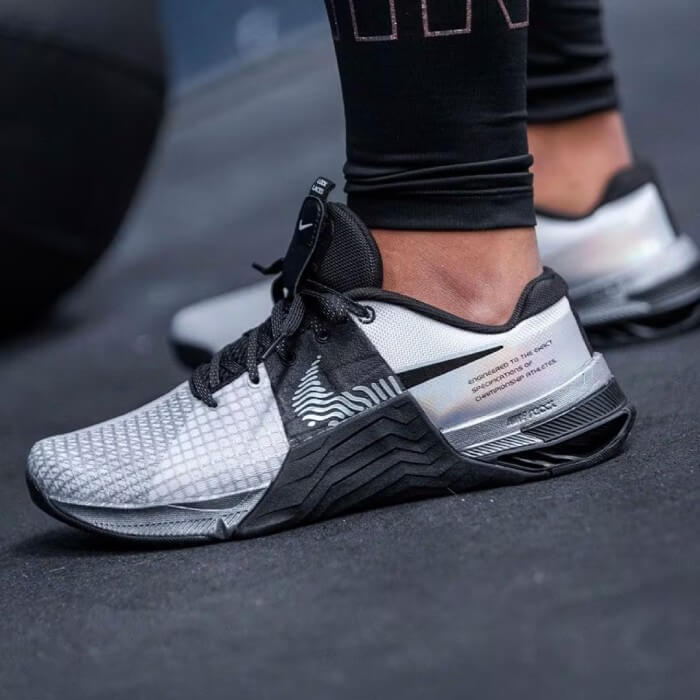
The heel on the Metcon 8 is lower than average for weightlifting shoes, but it is intentionally wide and flat to increase stability, and features an inner plate for additional weight distribution.
The closed lacing on this sneaker is tight and secure, and features hook & loop velcro closure tabs at the top that keep the laces from coming undone.
The sneaker is available in various color choices in both men’s and women’s sizing. That said, we feel as if Nike sacrificed a bit of functionality and comfort to go for a slimmer design, as the toe box on these sneakers is quite narrow and may feel restrictive.
This is noticeably different from the previous version, so those who owned the series 7 may need to buy at least half a size larger Metcon 8.
The upper of the Nike Metcon 8 is made from a lightweight textile mesh that’s both flexible and breathable, with additional textured overlays on the outer foot side, reinforcing it in common places of wear and tear.
Positives:
Could be better:
3. Nike Romaleos 4
The Romaleos 4 are Nike’s premium weightlifting sneakers., widely used by top professional athletes in the field of Olympic lifting.
They feature a high-end design that combines both durability, functionality, and comfort - with a justifiably higher price.
The sole of these sneakers is flat and stiff, which results in more power transfer from the feet during lifts. Additionally, the outsole uses a honeycomb pattern that provides traction and grip on a variety of surfaces
Looking at the bottom of the shoe, you’ll also notice a large pit extending from the middle of the outsole toward the heel. When pressed down to the surface, the pit seals the air inside, creating a suction cup effect that sticks the shoes to the ground.
Compared to most weightlifting shoes, the Nike Romaleos 4 features not one, but two security straps. The straps also hook in opposite directions, evening out the forces felt by the shoe upper during heavy lifts, which results in higher durability.
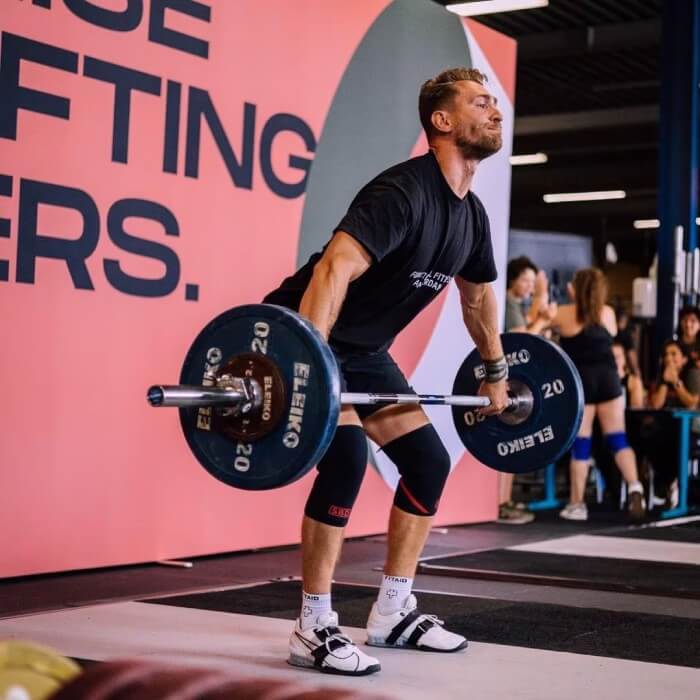
The sole of these sneakers is flat and stiff, which results in more power transfer from the feet during lifts. Additionally, the outsole uses a honeycomb pattern that provides traction and grip on a variety of surfaces
Looking at the bottom of the shoe, you’ll also notice a large pit extending from the middle of the outsole toward the heel. When pressed down to the surface, the pit seals the air inside, creating a suction cup effect that sticks the shoes to the ground.
Compared to most weightlifting shoes, the Nike Romaleos 4 features not one, but two security straps. The straps also hook in opposite directions, evening out the forces felt by the shoe upper during heavy lifts, which results in higher durability.
Nike's Romaleos 4 sets the standard for premium weightlifting shoes, blending durability, comfort, breathability, stability, and a unique suction cup effect into a single exceptional design preferred by top athletes.
Positives:
Could be better:
4. Adidas Powerlift 5 Weightlifting Shoes
If you care about ending plastic waste as much as Adidas does, then you'll find these powerlifting shoes very interesting. The upper is made of (at least) 50% recycled materials, so, not only are these a superb value for money, but they're also eco-friendly.
The Powerlift series is one of the most popular series Adidas has, and the Powerlift 5 has been fine-tuned to the needs of all serious powerlifters.
The upper is flexible and breathable thanks to the canvas upper with mesh inserts. You can sweat all you want in these, and your feet still won't come out of them looking like cooked prunes. The narrow toe box is the only thing that can cause a bit of discomfort, but only if you have very wide feet.
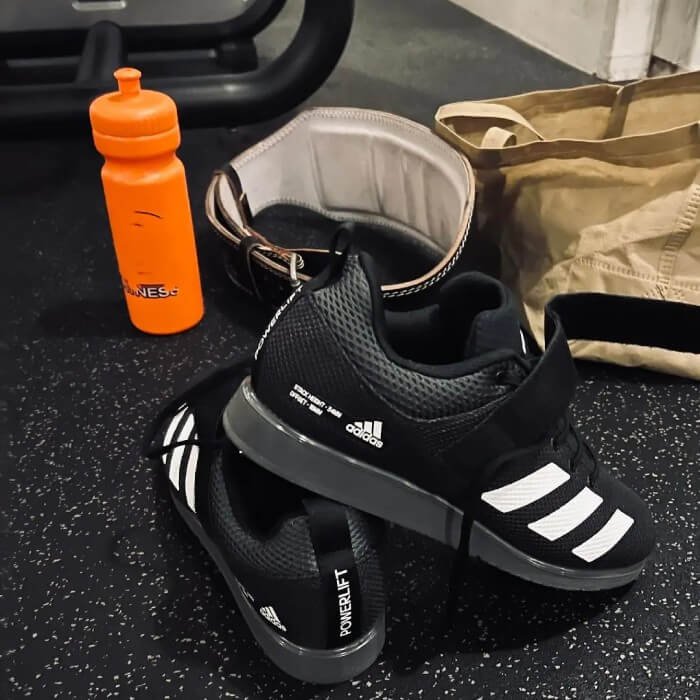
They're also some of the most stable pairs of shoes you'll be able to find. The high-density die-cut midsole wedge is unmatched in terms of stability, and the heel zone has been further reinforced. The strap and lace closure make these very adjustable, so you can make them fit as snug or as loose as you want.
If you want to add some versatility to your workout wardrobe, you'll be happy to know that the Powerlift 5 comes in bright, retro-styled colors that are not too loud, but still stand out.
Adidas Powerlift 5 Weightlifting Shoes, a top choice for serious powerlifters, offer eco-friendly construction with 50% recycled materials, exceptional stability, breathability, and adjustable fit in a stylish, retro-inspired design.
Positives:
Could be better:
5. Reebok Legacy Lifter III
When talking about innovative technologies, shoes rarely come to mind. But shoes can be very innovative, and Reebok has proven that. If you've heard anything about these, apart from them being some of the best shoes for lifting weights, it was most likely the inflatable pump technology (easy way to lace up your shoes).
They're breathable enough, and they're also very supportive. The midfoot strap and raised heel does a great job of providing stability, so all you need to focus on is the lift. This can be a downside if you're a beginner, though – the heel is a bit stiff, so, if you're not used to shoes like these, you may not find them the most comfortable.
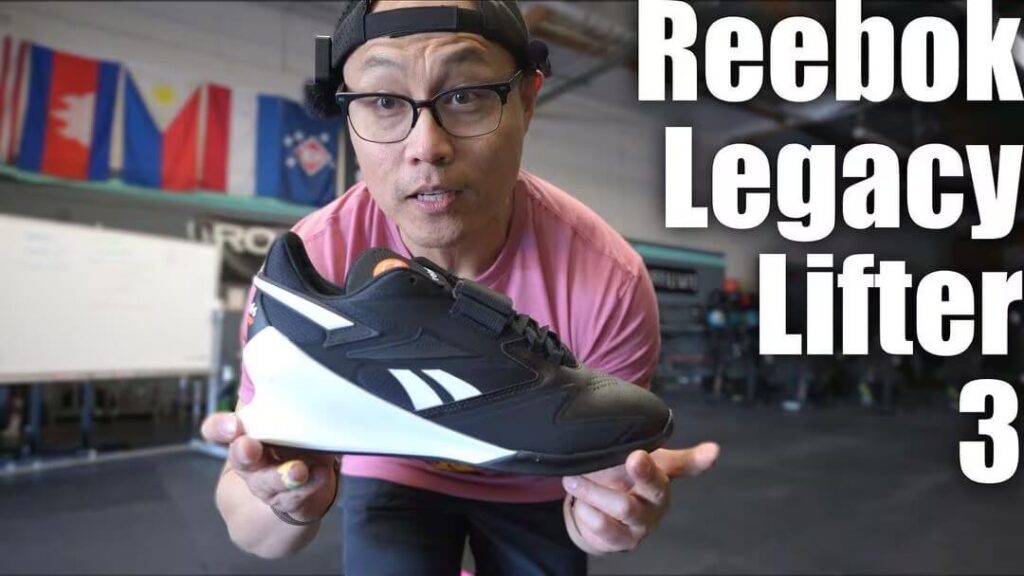
But even with the heel being a bit stiff, the anatomical shape does a lot in terms of comfort, and the antimicrobial sock liner is a great addition. All things considered, you can't find a better pair of squatting shoes.
Reebok Legacy Lifter III, renowned for their innovative inflatable pump technology and exceptional support, provide unmatched stability and comfort, setting a new standard for weightlifting shoes.
Positives:
Could be better:
6. Nobull Trainer+
For all you fans of the original Nobull Trainer, you’ll be excited to learn about the new and improved Trainer+. They’re great for functional fitness, and, although they’re not as versatile as advertised, these shoes are still fantastic.
The first thing you’ll notice is the seamless, minimalistic design. There’s a chance some may find it boring, but with so many colorful, in-your-face designs, it’s refreshing to see something this clean looking.
One of the things that was added to the new model are the Superfabric guard plates – these are not only durable, but also flexible and they’ll allow you to use the shoes for any purpose.
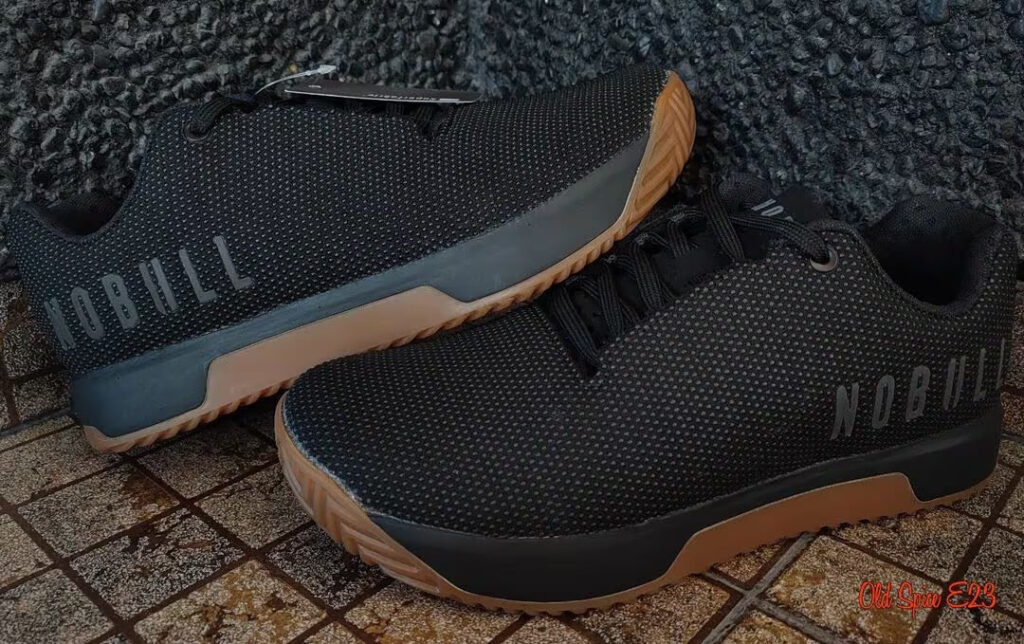
The EVA midsole is now taller, which means the shoes are now a lot more comfortable. But not only is the midsole taller, but the outsole also received some updates, too! It’s now larger than it was, and the shoes are more stable because of it.
Another great thing is the herringbone outsole pattern. It has deep grooves, and it makes the traction amazing, in all directions. This makes the shoes versatile, because you can easily transition between different surfaces, inside and outdoors.
The lacing system has been upgraded as well and has received internal webbings, making the shoes more stable, and they’re particularly great for intense movements.
Basically, these are superb and the only thing they’re not that good for is plyometrics, because of the thicker midsole – it can feel a bit heavy.
Nobull Trainer+ boasts a sleek design, durability, improved comfort, stability, and versatile traction, catering to intense workouts while having a thicker midsole less suitable for plyometrics.
Positives:
Could be better:
7. Inov-8 Fastlift Power G 380
Wide feet, rejoice! Here's a pair of wide weightlifting shoes that will fit you perfectly, and, because they're insanely durable, they will also last you a long time.
Even if your feet aren't as wide, but you're a serious weightlifter in search of some heavy-duty shoes, you absolutely need to at least consider these.
First, let's talk about the Graphene Powerheel. It sounds like a gimmick, but it's not – this represents an evolution in lifting technology, and it offers more support than any other material.
But the innovative features don't stop there. The G-Grip outsole uses graphene rubber, which makes the shoes super grippy and flexible. It also adds a lot in terms of durability. You know those moments during lifts, when every single ounce of traction counts? Those are the times you'll appreciate these outsoles.
The shoes focus primarily on stability, which is visible from the wide lockdown strap. The strap makes sure your feet are not only supported, but securely anchored as well.
Now, as with any shoes of this quality, these do come with a slightly higher price tag. But if you take the innovations and the manufacturing quality into account, I think you'll agree that the price is actually pretty reasonable.
Inov-8 Fastlift Power G 380 is the ultimate choice for weightlifters with wide feet, offering innovative Graphene Powerheel technology, a durable G-Grip outsole, a secure wide lockdown strap, all at an appealing price.
Positives:
Could be better:
8. Adidas Adipower III
These shoes are the successor to the Adipower II, which was developed for the 2012 London Olympic Games.
Adidas took what they learned from that experience and made their most technically advanced weightlifting shoe in the Adipower III.
The Adipower III is a premium product with a slightly higher price, but well worth the investment for serious athletes looking for the best shoes to lift in.
One unique thing about these shoes compared to contenders is the ripstop upper material. It’s primarily made of nylon, woven into a grid-like pattern that makes it more resistant to tearing and ripping. Ripstop is known for being durable and lightweight, which is why it’s commonly used in military gear.
The sole on these shoes is primarily made from rubber, and the outsole has a fine diamond pattern that provides excellent traction on various surfaces.
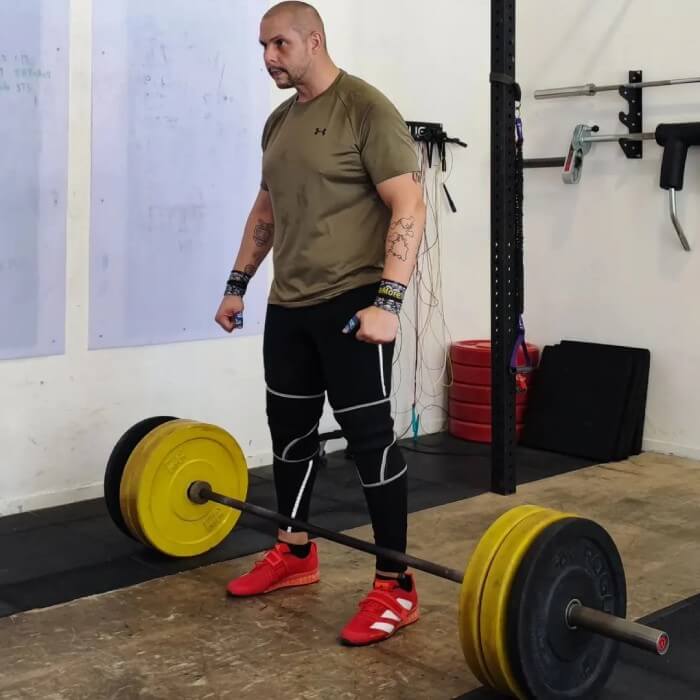
The narrow lacing structure is additionally reinforced with a large velcro strap that secures the footbridge. Furthermore, the collar is made from a padded mesh to support the ankle and make the shoes more comfortable, with an added pull tab on the back for quickly putting the shoes on and off.
Additionally, adidas has also committed to making its shoes more sustainable, with the Adipower III featuring as much as 50% recycled materials.
According to their design, the shoes are intended to be unisex. Although they’re a great choice for female lifters, it’s important to point out the slim toe box may not fit larger male lifters - making them better suited for athletes with narrow feet.
Adidas Adipower III offers weightlifters a premium, sustainable, and durable shoe with a unique ripstop upper, excellent traction, reinforced lacing, and ankle support, designed primarily for those with narrower feet.
Positives:
Could be better:
9. Reebok Lifter PR II - Men’s
Reebok has a legacy of fitness innovation and, if you did any research on them at all, you know they strive to be the best fitness brand there is. With the amount of competition in the market, they may not be the absolute best, but they're certainly up there with the most recognizable, high-quality brands.
Lifter PR II builds on the legacy of its predecessor, but comes with some updates. The features that many consider to be key and that have made it a staple are still here, but these shoes have been improved even further.
The textile upper is breathable and is a kind of mesh fabric material.
Breathability is a big thing, mainly comfort-wise. If the shoes are not breathable (enough), your feet will sweat a lot more than they usually would, and your focus is going to be on the discomfort, not on your form. And as you probably already know, form is crucial for injury prevention.
The EVA foam midsole has been reconfigured, which makes the shoes even more functional and comfortable. The best thing about the midsole is that it remains lightweight, even though it's nicely padded.
The raised heel enhances stability and helps with those explosive moments during lifts (this is especially important for Olympic weightlifting and powerlifting).
The hook-and-loop straps make the fit really secure, so there's no wobbling, and you don't have to worry about the shoes being too loose.
As far as traction and durability go, the rubber sole takes care of it. The only thing that may be an issue (in the beginning) is the fact that the shoes are a tiny bit stiff. It's not like you're standing on two rocks, but if you have something to compare these with, you may feel like these are not as soft as some of the other pairs of high top weightlifting shoes out there.
Overall, if you want the best value for money – these mens weightlifting shoes are it.
Reebok Lifter PR II offers a breathable textile upper, lightweight cushioned midsole, enhanced stability, secure fit, and durable rubber sole, making it an exceptional value for fitness enthusiasts.
Positives:
Could be better:
10. Liftinglarge Black Ground Lock Deadlift Slippers
We can't be done before mentioning some deadlift slippers, and these are the best there are.
One thing a lot of people worry about with flat shoes for lifting is the loose material on the foot. You know that annoying feeling of the shoe being too loose and then your foot does not feel secure, and instead of focusing only on lifting, you’re distracted by your uncomfortable shoe.
Well, no such thing happens with these! They have two Velcro straps that go over the middle of your foot, and they lock your foot into place.
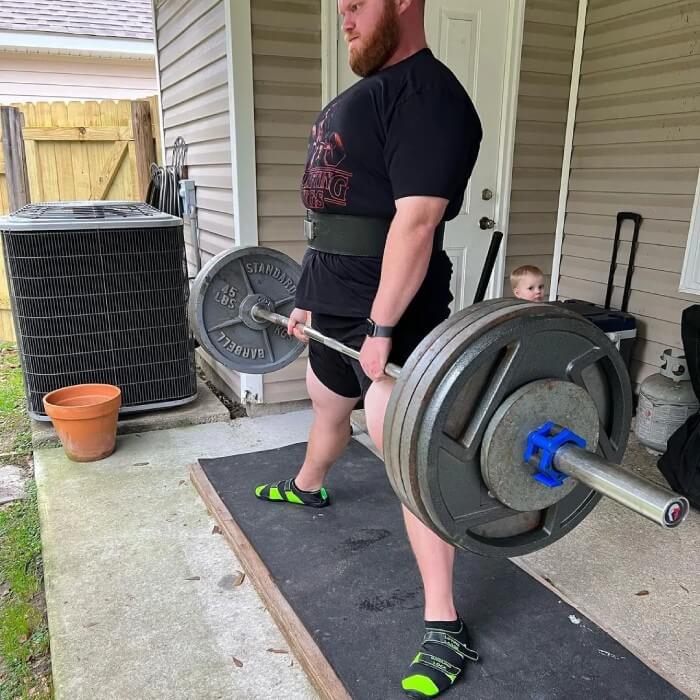
The best thing about them is the removable insert. If you take it out, you'll feel like you're standing on the floor. If you want to wear shoes while lifting, but want to feel like you're barefoot – this is how you do it.
Performance-wise, they're impeccable. Your feet will stay flexible, but without slipping. You will likely forget you have them on, not because they're zero drop, but mostly because of how comfortable they are.
The thing to pay attention to is the sizing, because these run half a size large. It's best to pay attention to the return and exchange policy, if you happen to buy them, but find that the fit isn't right for you.
LiftingLarge Slippers is feature secure Velcro straps, a removable insert for a barefoot feel, impeccable performance, and a sizing consideration for a comfortable and distraction-free lifting experience.
Positives:
Could be better:
Experts Who Contributed To This Article
M.Sc.Eng. Biotechnology, Sports Nutritionist

Do You Need Weightlifting Shoes?
There is no short answer to this question because whether or not you need weightlifting shoes depends on you and on the type of workouts you do.
1. Olympic Lifters
When it comes to Olympic weightlifters, weightlifting shoes are a must. Since there are a lot of dynamic movements like snatches, clean and jerks, weightlifting shoes are a great help when it comes to stability.
2. Powerlifters
Much like weightlifters, powerlifters can also have a lot of benefits from wearing elevated lifting shoes – especially during squats and bench presses. The elevated heel helps with staying upright and minimizes forward lean.
3. Casual Gym-Goers
Not every casual gym-goer needs specialized weightlifting shoes. Let’s say, people who casually go to the gym. Since they do general fitness workouts and exercises (e.g., light resistance training, cardio, bodyweight exercises), they have no need for weightlifting shoes.
However, if someone decides to venture into heavy weightlifting exercises such as heavy squats, then they might benefit from the added stability and form that weightlifting shoes provide. In that case, the casual gym-goer should start thinking of investing in a pair of proper weightlifting shoes.
4. Beginners
Being a beginner doesn’t automatically exclude the need for weightlifting shoes. It really depends on the type of exercise that they are focusing on. If your routine is centered around technique and light weights, then weightlifting shoes likely aren’t a priority.
But, as beginners are advancing, heavier weights might be introduced to the routine. In that case, the benefits of weightlifting shoes (enhanced stability, improved form) become more apparent.
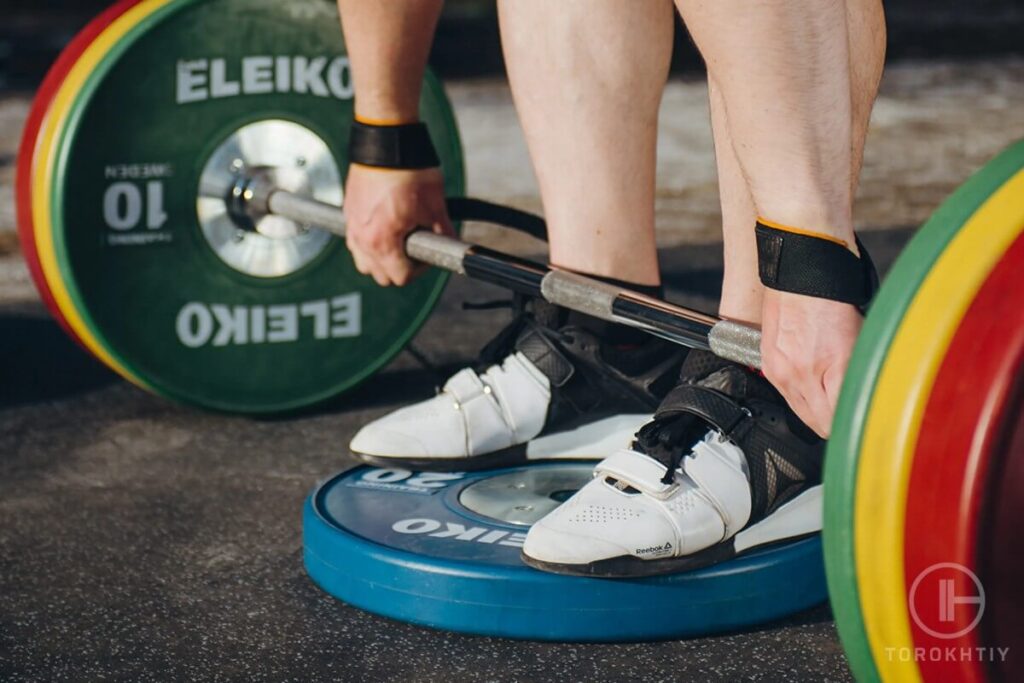
Why Get Weightlifting Shoes?
1. Improved Stability
Weightlifting shoes have multiple features that make them more stable to lift in.
For starters, the sole of weightlifting shoes is flat, thin, and rigid.
This provides you with an even standing surface that’s also closer to the ground, allowing you to feel the force of your lift more clearly, helping you better balance out your weight.
Weightlifting shoes also have a raised heel, usually from 0.5 to 1 inch, which elevates the back of your foot and helps you stand upright, improving your lift posture.
For example, this study comparing weightlifting to athletic shoes suggests that weightlifting shoes result in a more knee-flexed and upright posture during squatting and that this effect is even greater for experienced athletes.
2. Improved Performance
Apart from making you more stable, the raised heel on weightlifting shoes helps you generate more power.
When you attempt common lifting exercises such as squats or deadlifts, the majority of your pushing power, as well as force absorption, comes from the heel.
By elevating your heel and making it the center of your balance, the shoes prevent you from leaning back and forth on your foot.
This prevents your weight from shifting from heel to toe, which will improve your lifting performance as well as prevent injuries.
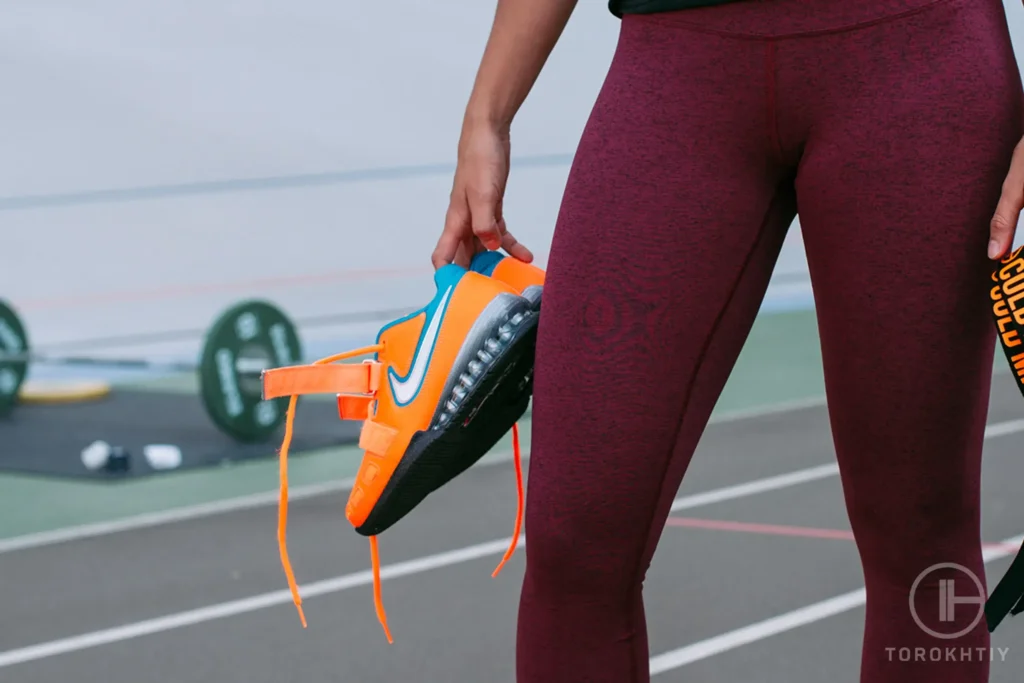
3. Greater Force
Your legs play a crucial part in generating force for a large number of lifts - including all squat and deadlift variations and even Olympic ones.
Weightlifting shoes have crucial features that increase your performance, resulting in greater force generation.
The flat sole of a weightlifting shoe puts your entire foot in an even position on the ground, helping you push using a greater surface area.
This results in less energy lost to compression, as seen in the softer soles of regular training shoes.
4. Secure Fit
Weightlifting shoes are designed to provide a snug fit around the foot, preventing it from moving inside.
They do this by having a narrower shape, a tighter lacing system, as well as commonly featuring a velcro strap or another mechanism that goes over the footbridge.
This secure fit is important to keep the foot stable and maintain proper form, which maximizes your power while reducing the risk of injury.
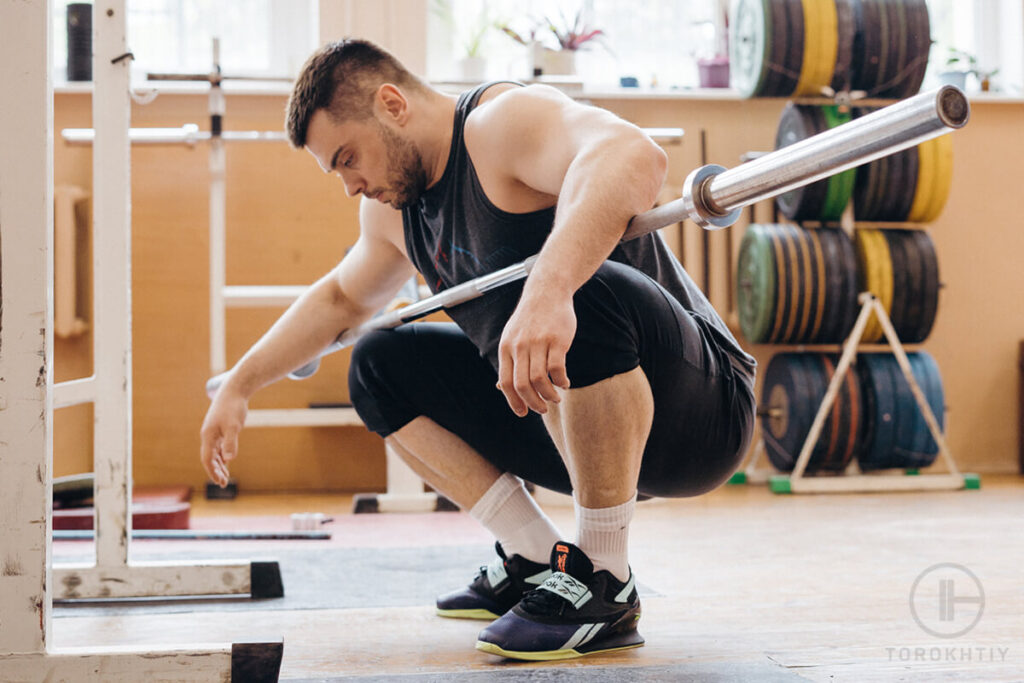
5. Longevity
Compared to regular workout shoes, weightlifting shoes are made from sturdier materials and with a higher build quality, to make them able to withstand forces that occur with heavy lifts.
This includes a more tightly knitted and reinforced top, thicker and more rigid sole materials, and more sewing and stitching as opposed to using glue for construction.
These properties mean that, on average, weightlifting shoes will outlast the typical training shoe.
This makes them a good return on investment in the long run, even if they’re more upfront expensive than a cross-training shoe.
6. Injury Prevention
This is one of the main reasons you should wear weightlifting shoes.
When it comes to preventing accidents, stability plays a key role, and weightlifting shoes help with keeping you stable. They're typically made of rubber (which is grippy) and with a raised heel – both create a stable base. This means that you can achieve better squat depth while maintaining upright posture.
The shoes also support your ankles and stabilize them during squats, cleans and snatches. If you want to reduce the risk of rolling your ankles under heavy weights, then you need to include weightlifting shoes in your fitness accessories.
With weightlifting shoes on, you'll also have the pressure distributed more evenly. Since they have flat, sturdy soles, the pressure will be distributed across your feet during lifts. Uneven weight distribution can lead to accidents and injuries, especially during heavy compound movements.
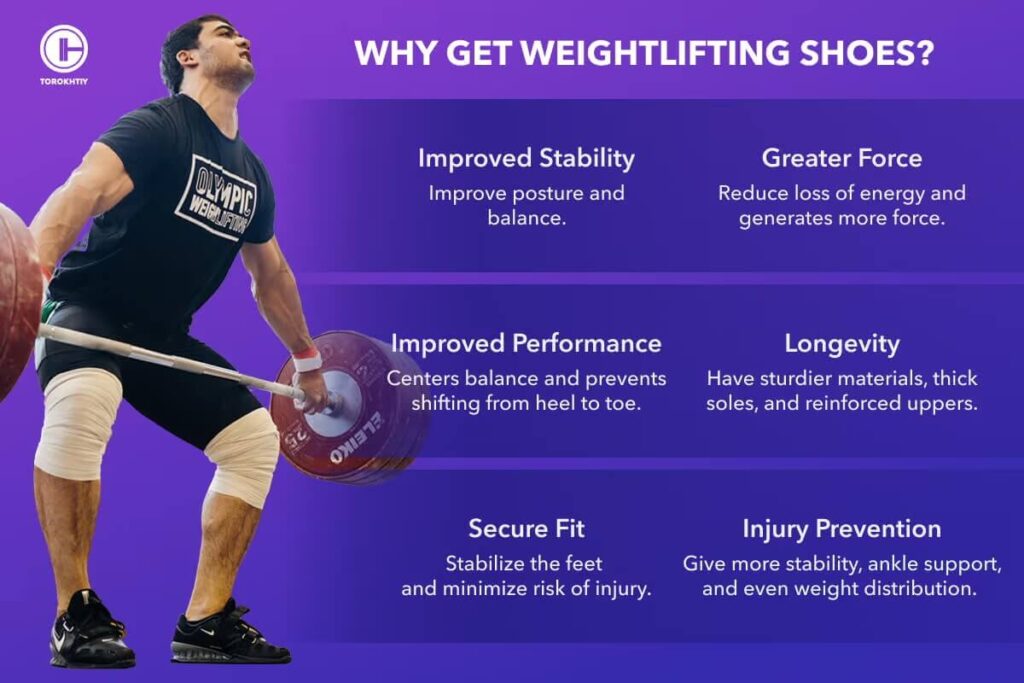
How to Choose the Best Weightlifting Shoes?
1. Stability
Weightlifting shoes are specifically designed to provide ample stability to the lifter, which is their most important quality.
This sets them apart from regular training shoes, making them essential for weightlifting.
One of the key elements that makes weightlifting shoes unique is their raised heel, with most heels falling between 0.5 to 1 inch in height.
The best weightlifting sneakers fall somewhere in the middle of this range, as they are the most comfortable for the majority of athletes.
In addition, shoes for weightlifting have a flat outsole throughout the length and width of the foot, creating the effect of the whole foot evenly touching the ground.
This helps redistribute weight more evenly, preventing slipping or shifting during lifting.
2. Materials
Weightlifting shoes are made with high-quality, durable materials that can withstand the rigors of heavy lifting and frequent use.
Each manufacturer carefully selects and tests these materials to ensure that the shoes can withstand the stresses and strains of weightlifting, providing athletes with a reliable and long-lasting product.
In addition to the sturdy materials used in the construction of weightlifting shoes, they often feature other high-quality materials to enhance comfort, support, and durability. These may include foam padding, breathable lining, reinforced stitching, and others.
The tops of weightlifting shoes are typically made of materials such as leather, synthetic leather, or a tightly knit mesh, which are sturdy and resistant to wear and tear. Meanwhile, the soles are mostly made of thick rubber or similar materials with excellent elasticity.
Most commonly, the heel and midsole support is made of thermoplastic polyurethane (TPU), which is non-compressible but also light compared to something like a metal insert.
3. Durability
Weightlifting as an activity puts a lot of pressure on the feet, and regular training shoes such as running sneakers simply can't withstand this level of stress. Using these shoes for weightlifting can lead to tearing, loss of shape, and other forms of damage, forcing you to go through new pairs at a higher rate and wasting money in the process.
However, the importance of durability goes beyond just saving money. If your shoes can't handle the weight and stress of weightlifting and give out mid-workout, it can lead to injuries and setbacks in your training.
To avoid this, shoes for weightlifting are made from tougher materials and constructed in ways that enhance their durability. While they may come with a higher upfront cost, investing in a quality pair of weightlifting shoes is a wise decision that can provide a better return on investment in the long run.
4. Breathability
Even the best lifting shoes for men and women won’t have the same breathability factor as cross-training or running shoes.
Weightlifting shoes typically feature an upper material that is less flexible and tightly knitted, and a construction that is more tightly sealed.
That said, manufacturers still recognize the importance of incorporating some level of comfort into weightlifting shoes. This can be achieved through features such as mesh panels, ventilated insoles, or small perforations (holes) that let air in and out.
Prioritizing breathability can compromise the shoe's overall construction quality and lower its durability. For this reason, many athletes consider stability, materials, and durability to be more important factors when choosing weightlifting shoes, with breathability being seen as a nice bonus.
Despite this, manufacturers continue to explore ways to improve the breathability of weightlifting shoes without sacrificing their other essential qualities.
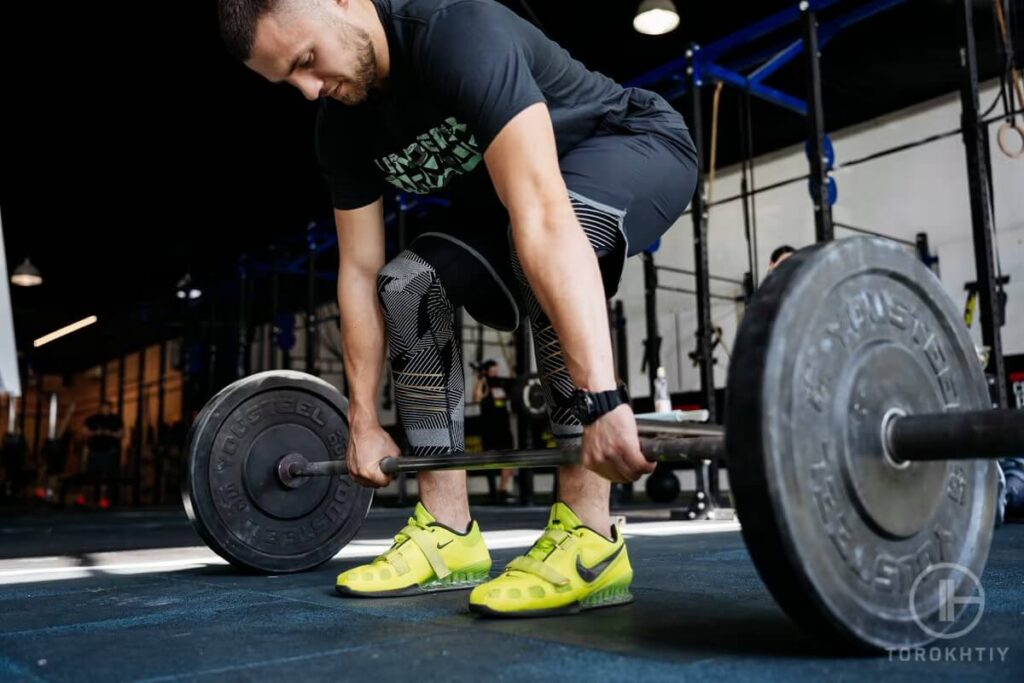
5. Grip
The outsole of weightlifting shoes is a critical component that provides grip and stability during lifts. This is the part of the shoe that comes into direct contact with the ground, so it needs to be designed with traction in mind.
Most weightlifting shoes feature a textured outsole with patterned ridges that are specifically intended to improve traction, particularly on uneven or slippery surfaces.
Additionally, many weightlifting shoes have suction cups or tighter ridge patterns around the heel. This creates a vacuum-like effect that seals off the air underneath your heel and helps the outsole stick firmly to the ground.
6. Closure Mechanism
You want a secure closure, so look for laces, straps, or (if possible) a combination of both. The fit needs to be snug because you don't want your feet to move during lifts; it can lead to accidents.
7. Heel Height and Elevation
These factors are crucial. The height can vary, but it's usually between 0.5'' and 1''. If you've never worn weightlifting shoes, you'll need to try them on so you can decide which height suits you best. The elevated heel will help with keeping the form correct, and also with squatting.
In contrast to weightlifting shoes, general fitness shoes typically feature a flatter sole. This is because fitness shoes are designed for versatility across various different activities. Fitness shoes weren’t engineered with heavy weightlifting in mind – unlike weightlifting shoes.
8. Toe Box
Pay attention to the shape and the size when it comes to the toe box. You want a spacious toe box so your feet can naturally spread and provide stability. A wide-toe box will also help when it comes to comfort, because it will prevent your feet from feeling cramped.
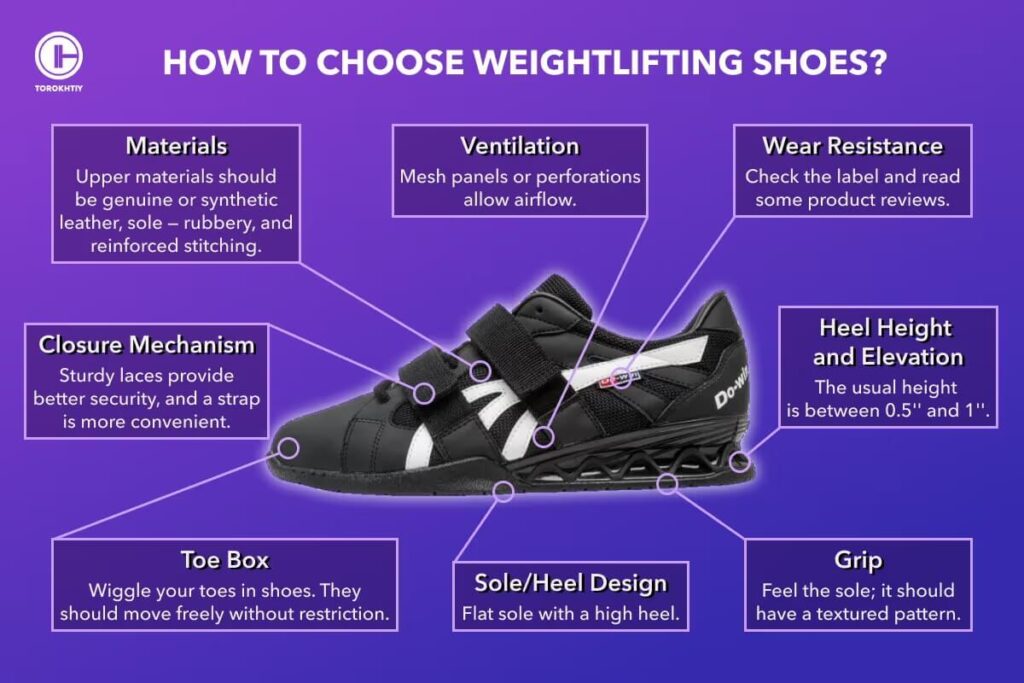
Is It Better to Weightlift Barefoot?
If you follow fitness content on social media or frequent a public gym, you may have seen some people perform lifting exercises barefoot.
Lifting barefoot is a common preference, although data suggest there are no significant benefits to doing this.
Meanwhile, going barefoot only has a slightly higher power output during the eccentric phase (lowering the weight back down).
Our expert Jacek Szymanowski articulates with refined expertise:
"Everyone has a preference when it comes to weightlifting footwear. Mine just happen to lie with Reebok. It’s not a sponsorship contract or something like that. I’ve just been going with Reebok for years now. And what’s important: I had no reason to change that. They’re simply amazing. I guess when trying different brands, they were built differently and have proven too narrow. And, as you can imagine, it hasn’t been pleasant. If you’re looking for proper lifting shoes for yourself, then put more gravity on stability. You want your foot steadfast and completely anchored to the ground. A flat base will help you get there. If you want optimal lifting angles, then look for elevated heels. The shoe's soles must be rigid. Too much cushioning could offset the force. I mean, imagine attempting a vertical jump from a waterbed. Maybe a bit exaggerated, but you get the point.” — and after being asked for a pro tip, he continued — “Pro tip? Never allow shoes to be a long-term crutch for limited mobility. Also, if you’re into functional fitness and are simply looking for an elevated heel, then I’d suggest using the VersaLift V2. It’s an accessory that is designed to elevate the heel. This’ll make Olympic lifts more ergonomic than simply relying on general shoes for functional fitness. But ensure they lack the additional cushioning. Rigid sole, all the way!"
What Is The Difference Between Weightlifting Shoes and Fitness Shoes?
Weightlifting shoes are designed for one primary purpose, which means they feature nearly identical characteristics and specs across all brands.
On the other hand, fitness includes various physical activities, some of which may include weightlifting. So they have to offer athletes a good balance of support, functionality, and comfort.
Here are some of the differences you will spot.
1. Heel
Heel height is one of the main differences between weightlifting shoes and fitness shoes.
All weightlifting shoes have a raised heel, typically ranging between 0.5 to 1 inch.
The raised heel helps to improve ankle mobility and puts the athlete in a more upright posture, which is helpful during basic lifts like squats, deadlifts, and Olympic lifts.
Higher heels also shift more weight towards the heel of the foot, which helps with stability and balance during heavy lifts.
On the other hand, fitness either has no heel or a small one, up to 0.5 inches at most.
This keeps the foot in a more natural position and evenly distributes your body weight across the shoe, putting less pressure on your heels, which is better for dynamic exercises like running and jumping.
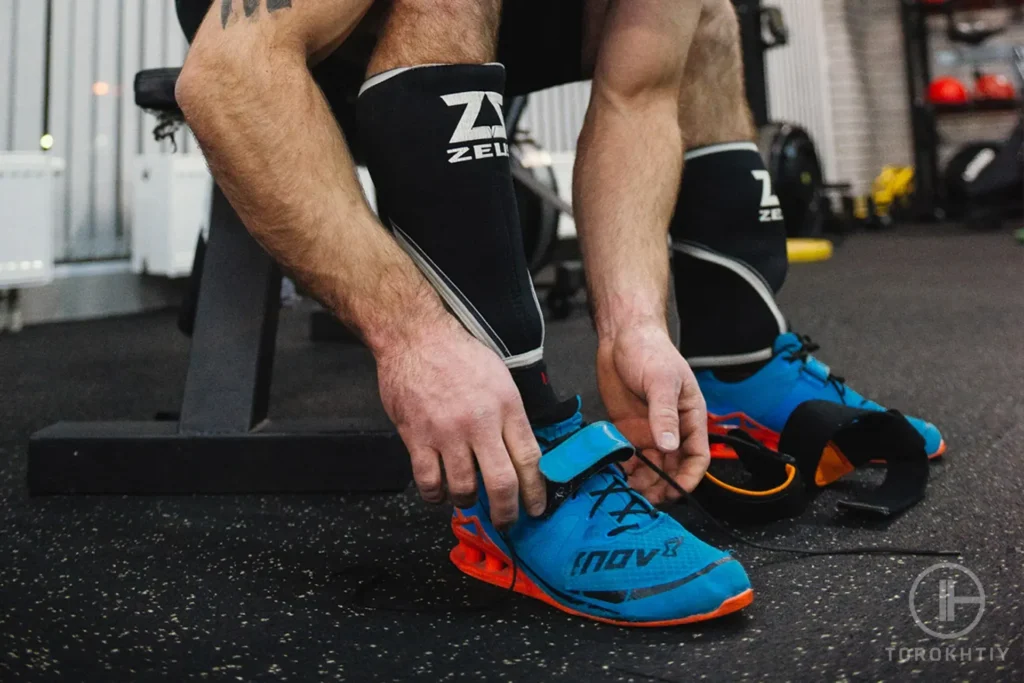
2. Arch Support
To accompany the raised heel and make the shoe more comfortable, weightlifting shoes need adequate arch support.
While the heel provides the initial lifting power, ultimately it will be your arch that must redistribute the weight across the foot, while also keeping you in balance.
For this reason, weightlifting shoes have thick levels of arch support, typically in the form of foam or thermoplastic that has high durability and elasticity, but it’s not uncommon to see solid, hard plastic too.
Fitness lifting shoes may, but aren’t required to provide arch support.
They’re built to be more comfortable and well-rounded for a wider range of exercises.
3. Sole
Weightlifting shoe soles are thin, flat, and rigid. They have to provide a solid, evenly spread base to stand on and can’t bend or break under overwhelming pressure.
On the other hand, fitness shoe soles are thicker, but also more flexible and often feature some ergonomic shaping around the heel, arch, and toes. Considering their use, they have to be equally good stationary and motion exercises.
This makes them a good overall choice, but not comfortable as running shoes or as supportive as weightlifting.
4. Lacing System
Another area where weightlifting and fitness shoes may differ is the lacing system. Most weightlifting sneakers feature a standard cross-lacing system that’s narrow at the top.
This gives them a tight feel and keeps the foot from moving inside the shoe. Sometimes, weightlifting ones feature additional lacing support, most commonly a velcro strap that goes across.
On the other hand, fitness shoes can vary in their lacing. Typically, they have a wider and more relaxed lacing system to accompany the soft tongue.
They often have fewer eyelets as well, which means they have fewer rows of lacing, too. This makes them less hard on the top of your foot, but also looser.
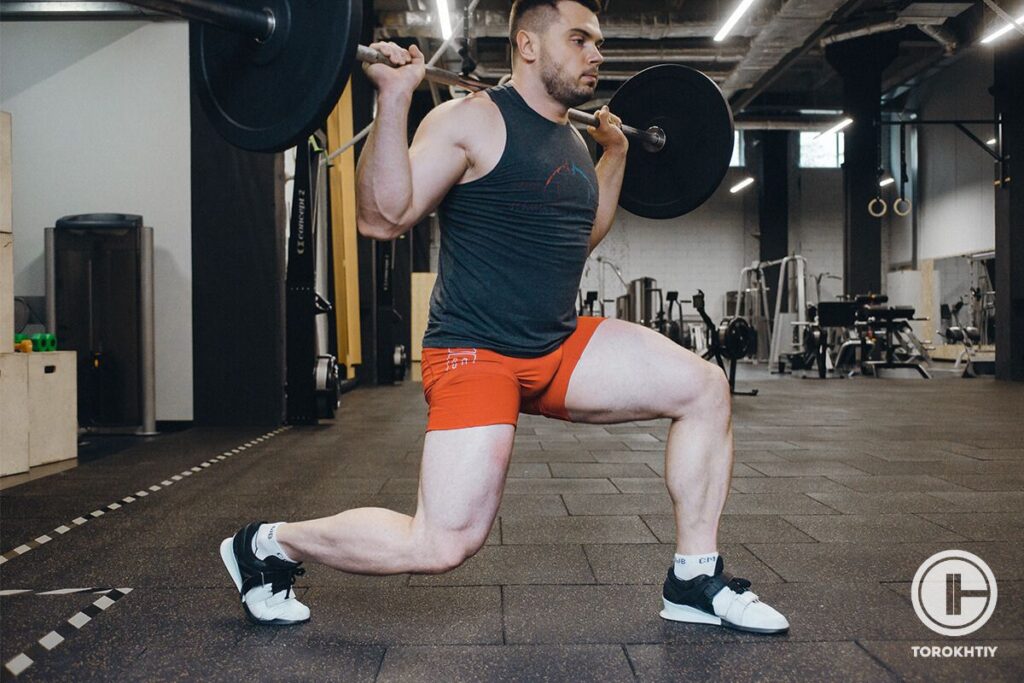
5. Build Quality
Weightlifting shoes have to withstand more pressure than fitness. This is easily reflected in their average build quality. The top of weightlifting shoes is often made with more layers of material to make them more durable and less likely to split.
By observing weightlifting sneakers, you can see that the mesh is more tightly knitted, and often reinforced using a plastic framework. Fitness shoes more often have a lighter mesh top that provides more breathability, which makes them more comfortable for dynamic exercises like cycling or the treadmill.
However, weightlifting ones also feature higher amounts of sewing or stitching, as opposed to fitness shoes which use more glue, which speeds up and saves money on the cost of production. As a result, weightlifting shoes are generally higher priced than fitness - which is evident when you compare both types from the same brand.
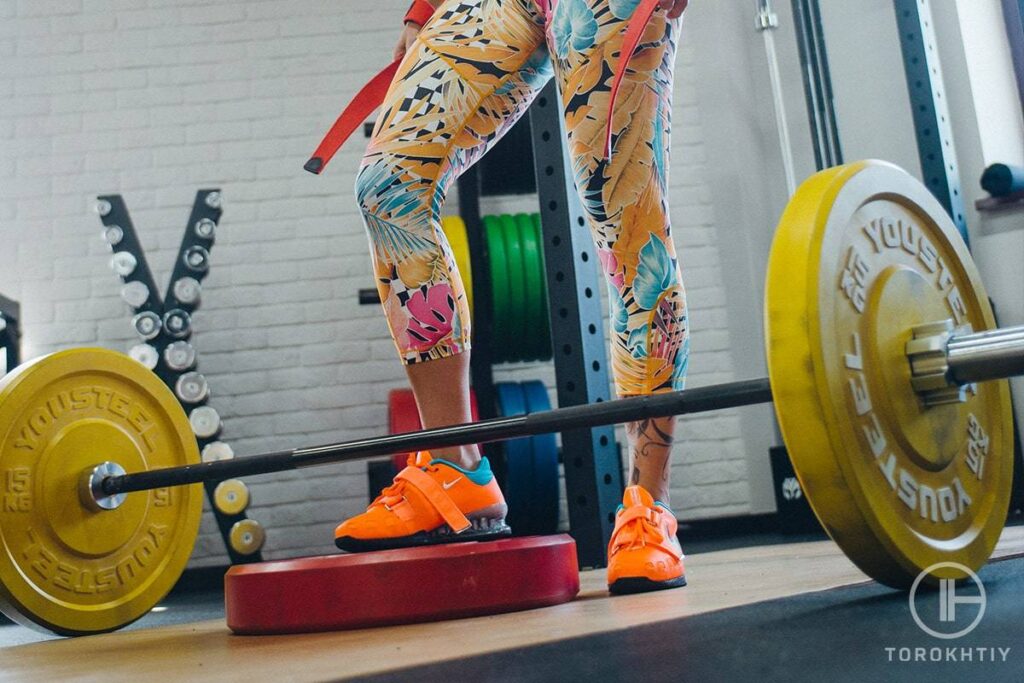
How to Extend the Lifespan of Your Weightlifting Shoes?
If you invest resources into a product, one of the most prominent things that you’d want is for that product to last for as long as possible – the same thing applies to weightlifting shoes. Let’s see what you, as the wearer, can do to ensure you get the best mileage out of your weightlifting shoes.
1. Cleaning and Maintenance
The most important thing is to wipe down your shoes after each use. This way, you'll remove dirt and sweat and reduce the buildup and bacteria that can damage them. Use a microfiber cloth or a brush for this.
If you happen to notice any stains, you can go over them with a damp cloth and some mild soap. Don't use any harsh chemicals or you'll damage the material.
After you're done, air dry them at room temperature. Keep them away from heaters, radiators or direct sunlight.
2. Storage Tips
Your shoes will be the happiest in a dry, well-ventilated place. This will keep any moisture from building up. Moisture buildup can cause them to have an odor and can lead to damage, so damp environments are a big no-no.
If you have a few pairs, a shoe tree is a great choice for storage. That way, the shoes will maintain their shape when you're not wearing them.
Make sure they're completely dry before you put them away. If they're not, the next time you want to wear them, you may find that mold, which can harm your health, and mildew have grown on them.
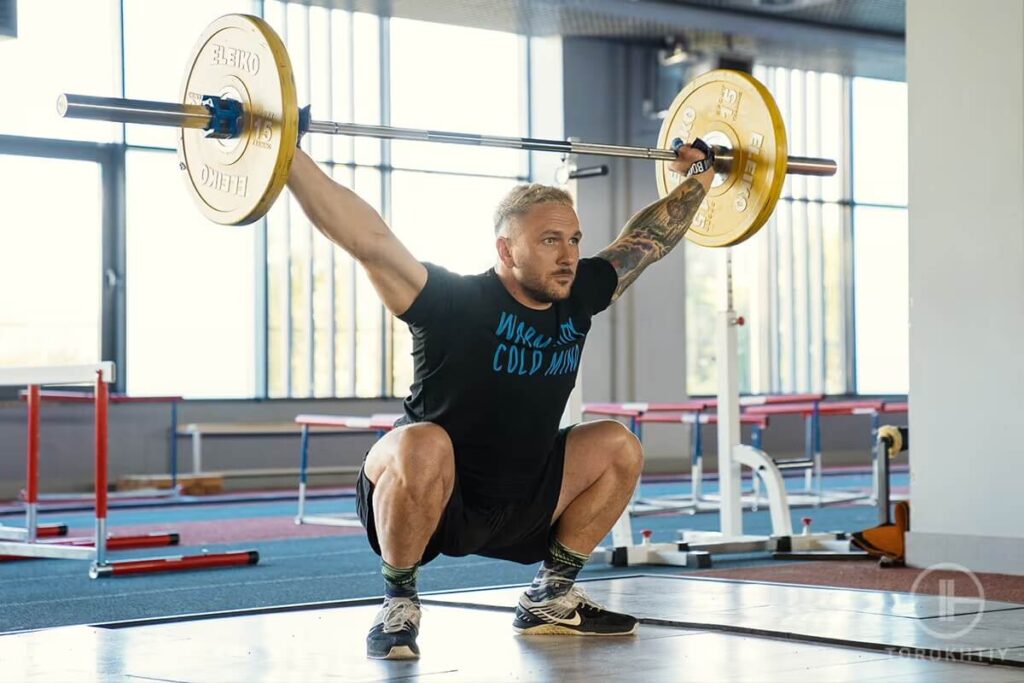
FAQ
Why Are Flat Shoes Better for Lifting?
Flat shoes are considered the best for weightlifting because they provide a stable base to the athlete.
The flat soles touch the ground evenly along the whole foot, meaning there’s less friction with the ground, which equals more grip.
Also, the sole is thinner, which reduces the distance between your foot and the floor.
This lets you better feel your weight pushing against the ground and helps you adjust your stance and improve balance.
Can I Lift in Running Shoes?
While it’s possible, you shouldn’t try to lift in running shoes.
They are designed to support your body weight while also being lightweight, they’re not built to withstand the sort of pressure that occurs during weightlifting.
The soft foam on running shoes can easily bend and lose shape, the raised heel and arch can throw you off balance compared to flat lifting shoes, and glued soles can get loose.
Additionally, studies comparing the two types of shoes showed that athletes wearing weightlifting shoes produce a large moment, which increased their overall performance.
Is It Better to Squat in Weightlifting Shoes?
It absolutely is! The elevated heel that the shoes have will make your ankles more mobile and will allow a better squat depth.
Is It Ok to Deadlift in Weightlifting Shoes?
They'll give you some stability, but they're far from ideal. When it comes to deadlifts, the best choice is deadlift shoes. If you don't have those, however, you can even try socks. Lifting barefoot is more effective and enhances proprioception, so look for something that can simulate that barefoot feeling.
Why Do People Lift in Converse?
This is because Converse have flat soles, which means they give a stable base. They give good contact with the ground, which improves stability.
Conclusion
Athletes who focus on weightlifting as their primary exercise, especially those with competitive aspirations, should look to get a pair of weightlifting sneakers.
Our top pick for the best weightlifting shoes goes to the DO-WIN WEIGHTLIFTING SHOES, although other options on the list are certainly worth checking out for their unique features.
What type of lifting exercises do you do?
Have you tried lifting barefoot?
Do you own a pair of specialized lifting shoes?
Let us know your thoughts in the comments and make sure to follow our social media pages for more informative fitness content and product reviews.
Also read:
- Best Reebok Functional Fitness Shoes
- Best Shoes for Leg Day
- Best Deadlifting Socks
- Best Running and Lifting Shoes
- Cross Trainer vs Running Shoes
- Best Weightlifting Shoes for Women
- Best Shoes for Hiit Workouts
- Best Deadlift Shoes
- Best Womens Training Shoes
References:
- "Proprioception" Sciencedirect https://www.sciencedirect.com /topics/neuroscience /proprioception (accessed September 09, 2023).
- "WHAT IS NIKE REACT?" Nike https://www.nike.com/ help/a/nike-react (accessed September 09, 2023).
- Hayley S Legg "The effect of weightlifting shoes on the kinetics and kinematics of the back squat" J Sports Sci. 2017 Mar;35(5):508-515
- Hayley S. Legg "The effect of weightlifting shoes on the kinetics and kinematics of the back squat" Journal of Sports Sciences 20 Apr 2016
- Mark E. Hammer "Shod versus barefoot effects on force and power development during a conventional deadlift" June 2018
- "Mold and Mildew" Oregon State University https://ehsc.oregonstate.edu /mold-and-mildew (accessed September 09, 2023).
- Andrea T Borchers "Mold and Human Health: a Reality Check" Clin Rev Allergy Immunol. 2017 Jun;52(3):305-322
- Daniel J. Southwell "The effects of squatting footwear on three-dimensional lower limb and spine kinetics" Journal of Electromyography and Kinesiology Volume 31, December 2016, Pages 111-118
- Kevin A. Valenzuela "Footwear Affects Conventional and Sumo Deadlift Performance" Sports (Basel). 2021 Feb; 9(2): 27.
Why Trust Us?
With over 20 years in Olympic Weightlifting, our team does its best to provide the audience with ultimate support and meet the needs and requirements of advanced athletes and professional lifters, as well as people who strive to open new opportunities and develop their physical capabilities with us.
All products we select are primarily approved and tested by the Olympic Weightlifting Champion Oleksii Torokhtiy. Under his guidance, we provide honest and reasonable assessments of the products we review by checking their characteristics, packaging, design, comfort and durability features, and general product rating. We select products from only high-quality and trusted sports brands, thus vouching for their quality.
The product testing process is described in more detail here
Author: Oleksiy Torokhtiy
Olympic Weightlifting Champion
Best Results: Snatch – 200 kg,
C&J – 240 kg
Oleksiy Torokhtiy is a professional athlete boasting 20 years of experience in Olympic weightlifting. With multiple European and World titles under his belt, he has showcased his prowess in two Olympic Games (Beijing 2008 and London 2012). Upon concluding his illustrious career, Oleksiy dedicated himself to coaching. By 2022, he had conducted over 200 weightlifting seminars worldwide. He is the visionary behind an international sportswear and accessories brand known for its motto, “Warm Body Cold Mind.” Additionally, he is an esteemed author and the creator of a series of training programs and eBooks.
Reviewed by: Sergii Putsov
Head of Sport Science, PhD
Best Results: Snatch – 165 kg,
C&J – 200 kg
Sergii Putsov, Ph.D., is a former professional weightlifter and National team member, achieving multiple medals in the 94 kg weight category at national competitions. With a Master’s degree in “Olympic & Professional Sport Training” and a Sport Science Ph.D. from the International Olympic Academy, Greece, Sergii now leads as the Head of Sport Science. He specializes in designing training programs, writing insightful blog articles, providing live commentary at international weightlifting events, and conducting educational seminars worldwide alongside Olympic weightlifting expert Oleksiy Torokhtiy.
If you have any questions/suggestions/any other inquiries considering product reviews, you can reach out to us via email – [email protected]
